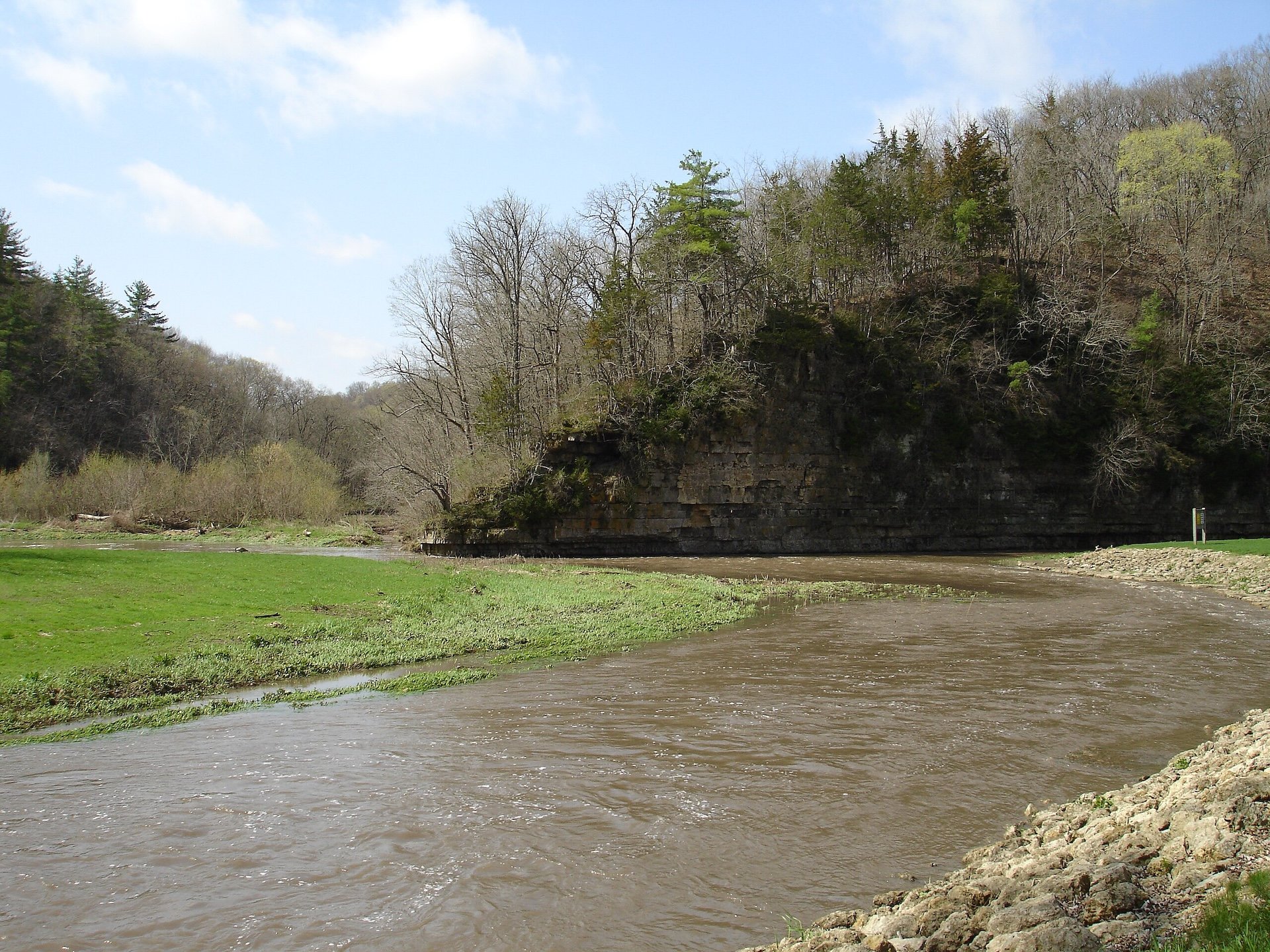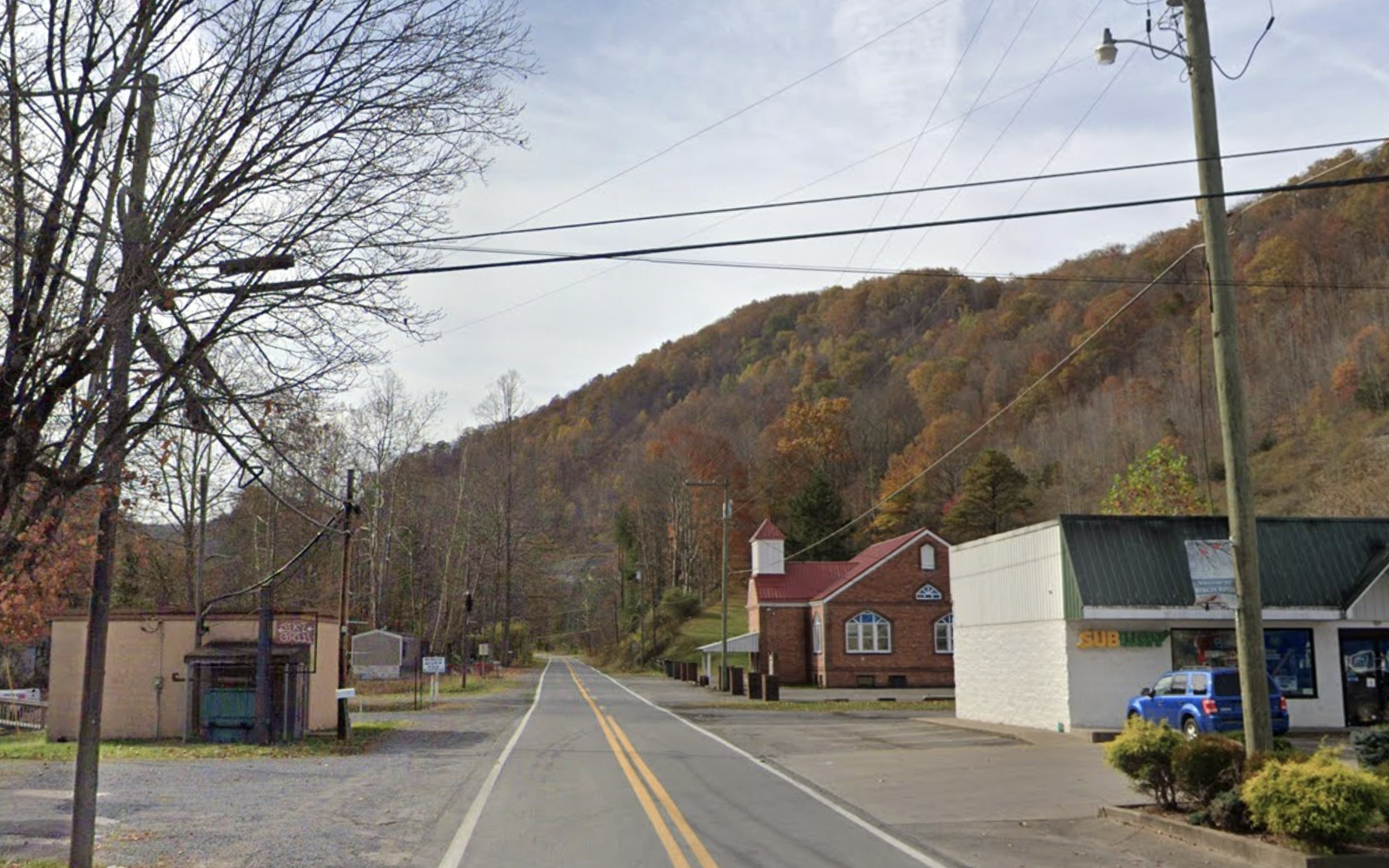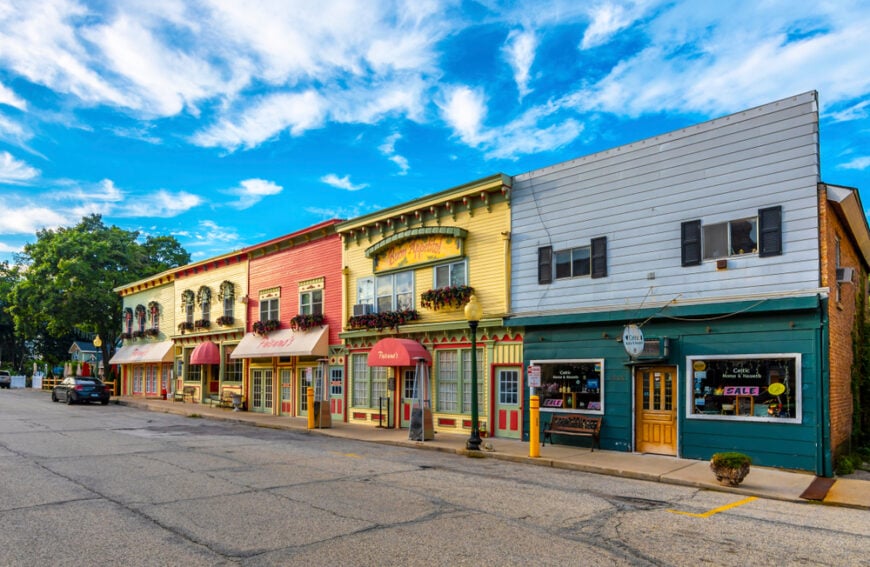
Northeast Illinois unfolds like a softly spoken invitation, where rolling fields slip into dense woodlands and the hum of urban life feels miles away. Here, Kingston’s brick-lined Main Street meets the whisper of cornfields, and Bull Valley’s wooded hills frame your view like a well-worn book jacket. This is a region called “Northeast” because it bridges the edge of Chicago’s bustle with the quiet heart of rural America—each town a bookmark in a story of open skies and hidden histories.
In Sheridan, the Fox River curves past weathered storefronts and pathways carpeted in autumn leaves, while Union’s vintage trolleys and the Illinois Railway Museum remind you that even solitude has a storied past. You’ll catch glimpses of Hebron’s Water Tower, a local beacon since 1952, and Maple Park’s summer baseball cheers echoing across endless plains. These towns carry the weight of community traditions like cherished heirlooms, unfolding in soft morning light and lingering long after sunset.
The region’s importance grows in its contrasts: Chicago’s skyline rests beyond the horizon while farm stands spill over with seasonal produce at every corner. Here, heritage festivals and pumpkin patches carry you through the agricultural calendar as naturally as dawn follows dusk. Trails in Mettawa’s Middlefork Savanna offer moments of stillness overlooked by commuters, and Campton Hills preserves prairie paths that settle restlessly beneath your boots.
This is territory where space feels generous and time moves on a human scale. Each mile of two-lane highway becomes a canvas for starlit nights and sun-soaked afternoons. Northeast Illinois extends an effortless welcome—grounded in the real work of growing food, caring for neighbors, and honoring the landmarks that anchor each community in its own quiet grandeur.
25. Kingston: Rural Quiet with a Historic Core
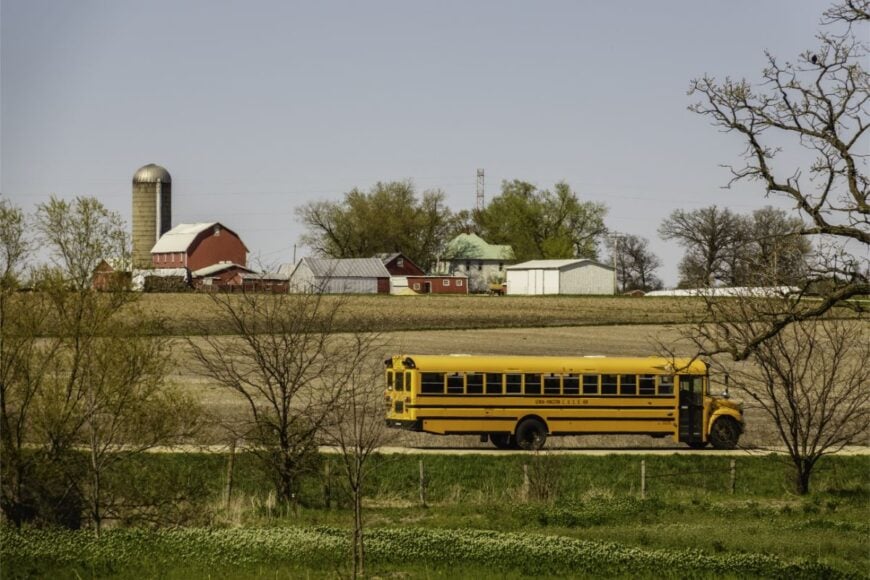
Kingston, home to about 1,200 residents, feels like a village where time slows to match the pace of the surrounding cornfields. Its historic downtown, lined with brick storefronts, is just a few blocks long and sees more tractors than traffic jams.
Locals gather at the small café for breakfast, then head out for fishing at nearby Shabbona Lake or strolls along the Kishwaukee River. Agriculture is the backbone of life here, and seasonal farm stands pop up along the main road.
Kingston’s charm comes from its stillness—nights are dark enough to see constellations, and mornings are punctuated only by roosters and the hum of grain dryers. With no big-box stores and the nearest chain coffee shop miles away, it’s the kind of place that teaches you to savor the quiet. It’s the kind of town that reminds you how peaceful the Midwest can be.
Where is Kingston?
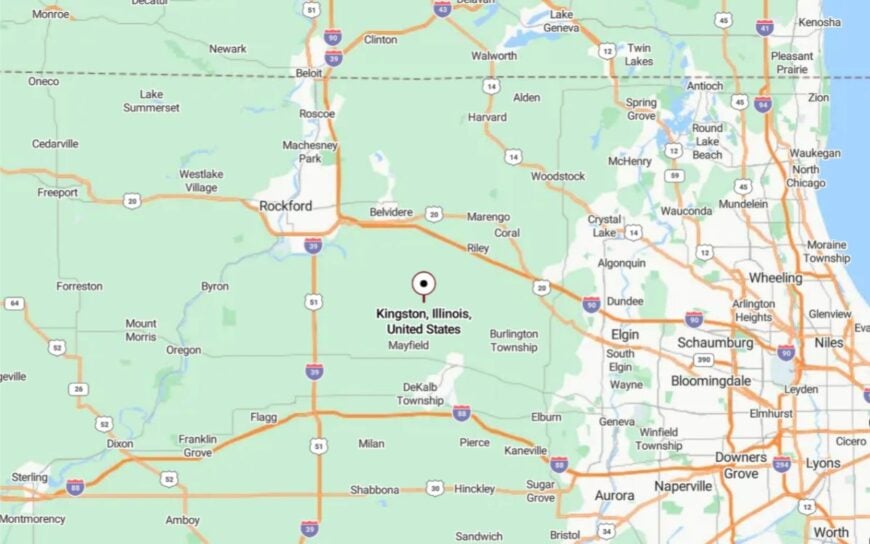
Kingston sits in northern DeKalb County, about 15 miles north of DeKalb and west of the McHenry County line. It’s reached via Illinois Route 72, a two-lane highway that winds past silos and farmsteads.
The nearest interstate, I‑90, lies nearly 20 minutes east, keeping through-traffic at bay. Rolling fields surround the village, so the approach feels like you’re crossing into a world apart.
24. Maple Park: A Prairie Town with a Small-Town Soul
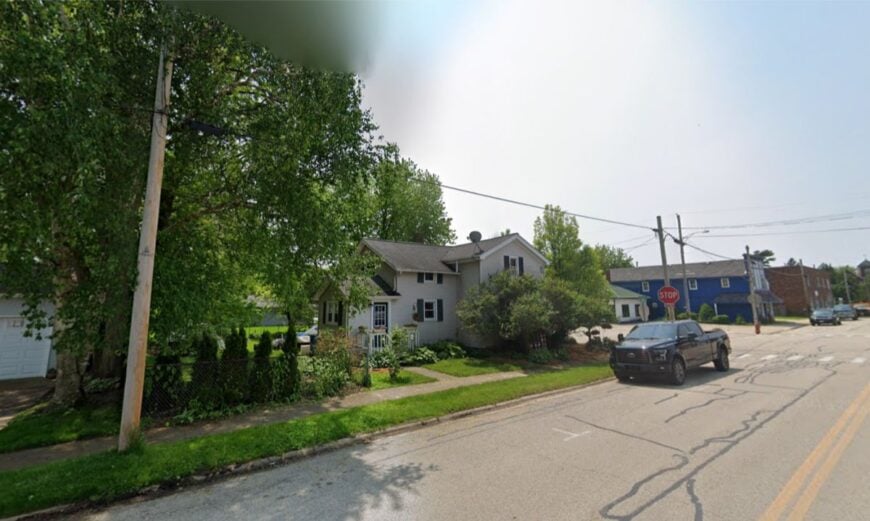
Maple Park’s 1,300 residents live among a checkerboard of fields and old farmhouses, where life still revolves around the rhythm of planting and harvest. Main Street boasts just a handful of businesses, including a corner tavern and a feed store that’s doubled as a social hub for decades.
On summer evenings, you might hear the cheers from the local baseball diamond carry across town. Surrounded by miles of flat farmland, Maple Park has no natural reason for outsiders to pass through—and that’s exactly why it feels so private.
Autumn brings pumpkin patches and quiet Sunday drives, while winters settle in with a hush that only snow on open ground can bring. The absence of streetlights on the outskirts makes the night skies vast and star-filled. It’s a place where neighbors wave because they know your name, not just your face.
Where is Maple Park?
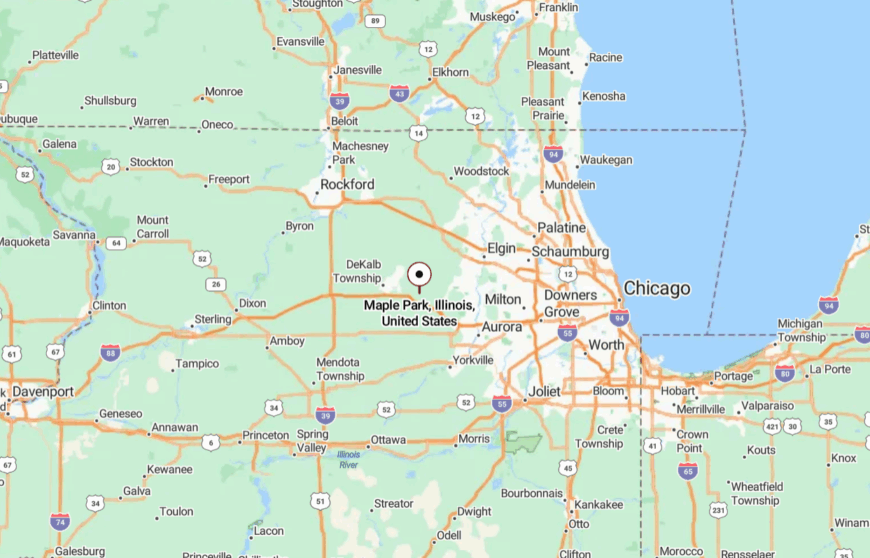
Maple Park straddles the Kane and DeKalb County line, about 50 miles west of Chicago. It’s accessible via Illinois Route 38 or Route 64, both of which narrow to two lanes outside the suburbs.
The nearest commuter rail station is more than 15 minutes away, so most visitors arrive by car. Driving in, the horizon opens until it’s nothing but farmland meeting sky.
23. Capron: A Northern Crossroads Wrapped in Farmland
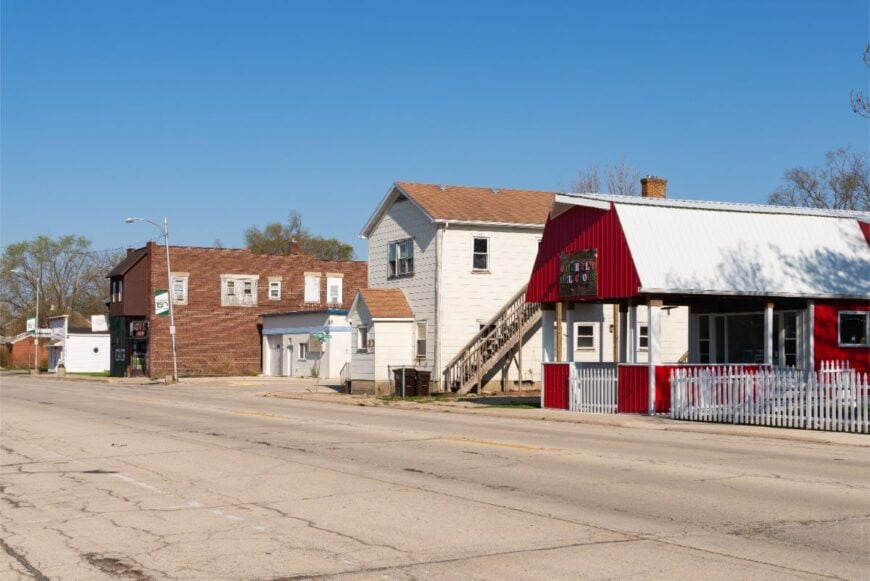
Capron, with a population just over 1,300, sits quietly near the Wisconsin border, far from the state’s busy urban corridors. The village has a single main street dotted with modest shops, a hardware store, and a diner where coffee is still served in thick ceramic mugs.
Surrounded by wide swaths of corn and soybean fields, Capron’s low density and rural edges give it a hidden quality despite its location on a state route. Residents gather at the local park for community events or head to nearby Pierce Lake for fishing and kayaking.
Farming and small-scale manufacturing form the backbone of its economy, but neither bring enough bustle to disturb the stillness. Nights here are punctuated by crickets, not car horns. Capron feels like a place you stumble upon and then hesitate to share, for fear it might change.
Where is Capron?
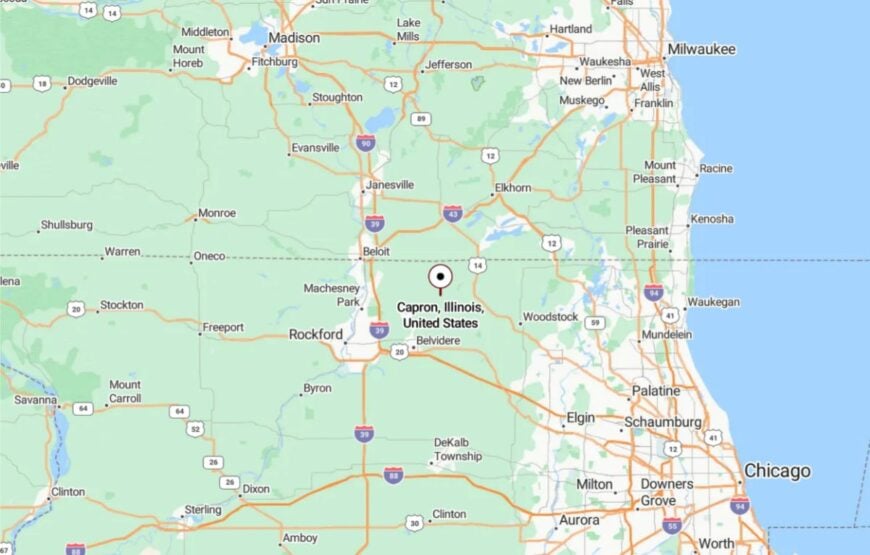
Capron is in Boone County, roughly 10 miles east of the Rockford area and a short drive from the Wisconsin line. It’s reached via Illinois Route 173, which meanders through farm country with minimal traffic.
The absence of nearby interstates keeps it off most travel itineraries. Surrounded by open fields, it offers a kind of seclusion you can feel as soon as you step out of the car.
22. Union Grove: Rolling Fields and a Single Main Road
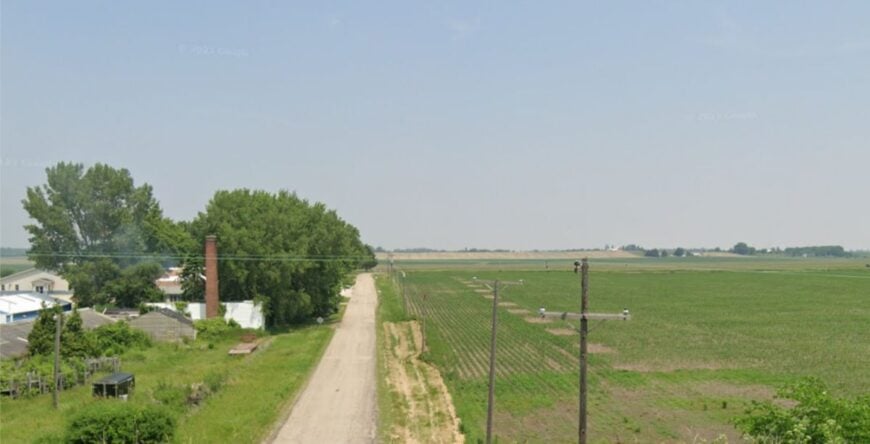
Union Grove is one of those blink-and-you’ll-miss-it villages, with fewer than 900 residents and a main road lined with tidy homes and shade trees. Its rural character is reinforced by the surrounding farmland and the absence of large commercial districts.
Locals enjoy fishing in nearby lakes, tending backyard gardens, or driving to local farmers’ markets on weekends. The community’s small size means neighbors know each other well, and gatherings often happen in someone’s barn or backyard. With no traffic lights and minimal signage, Union Grove keeps its presence understated.
The evening air smells faintly of cut hay in summer, and winter mornings are quiet enough to hear snow crunch from blocks away. It’s the sort of place where a simple walk feels like an escape.
Where is Union Grove?
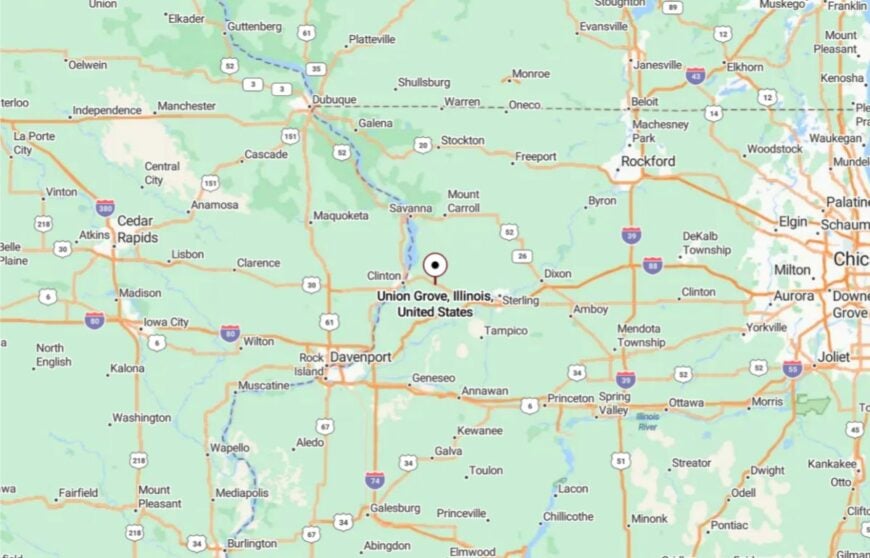
Located in Whiteside County’s northeast edge, Union Grove is miles from major highways. The nearest larger town, Dixon, is about 20 minutes away.
Access comes via county roads that weave through farmland and low hills. Its out-of-the-way location ensures it stays off the radar of casual travelers.
21. Genoa: Riverside Quiet with a Historic Touch
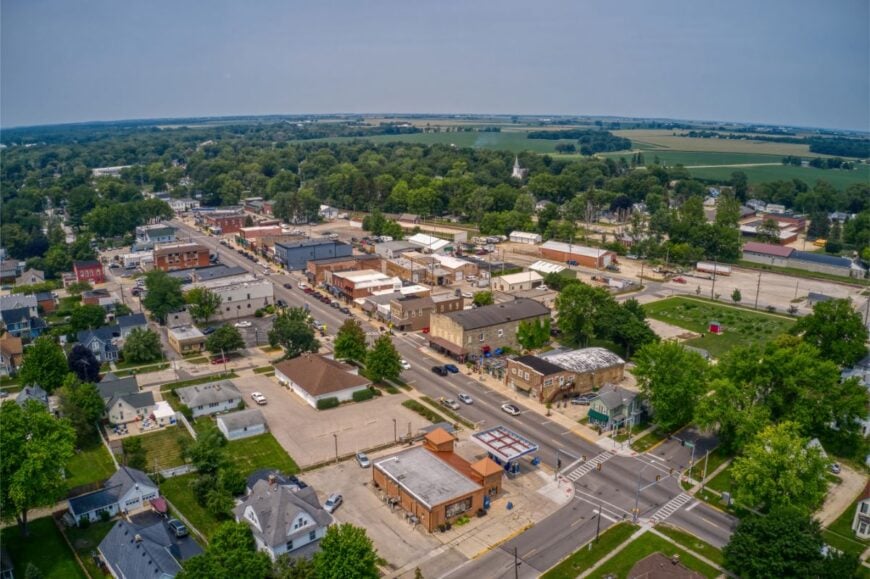
Genoa’s population of just under 6,000 still manages to feel small, thanks to its slow pace and compact downtown. The Kishwaukee River flows gently past town, offering spots for kayaking, fishing, and quiet riverside walks.
Historic brick buildings house family-run restaurants, antique shops, and an old-fashioned barbershop. While larger than some nearby hamlets, Genoa’s edges are still bordered by farmland, giving it a protected feel. Residents take pride in local festivals that never overwhelm with crowds.
Nights are peaceful, with the sound of the river mingling with distant train whistles. Genoa offers the best of small-town Illinois—historic charm wrapped in natural stillness.
Where is Genoa?
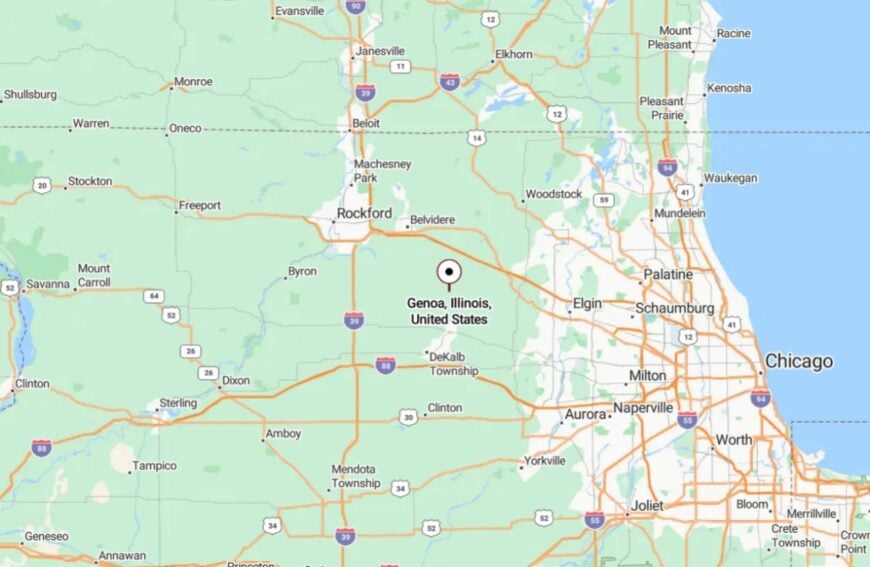
Genoa lies in DeKalb County, about 20 miles north of the city of DeKalb and west of the McHenry County line. It’s accessed via Illinois Route 72, which follows a scenic path through farmland and along the Kishwaukee River.
The nearest interstate is I‑90, about 15 minutes east. Surrounded by open space, Genoa feels buffered from the suburban sprawl pressing in from the east.
20. Lily Lake: A Village Tucked Between Woods and Water

With fewer than 1,000 residents, Lily Lake feels like it was designed for privacy. The heart of the village is a small cluster of homes and farms bordered by forest preserves and wetlands.
Residents spend weekends cycling along the Great Western Trail, kayaking on nearby lakes, or tending vegetable gardens that stretch behind century-old farmhouses. There’s no business district to speak of—just a few roadside produce stands and a post office that knows everyone by name. The village limits sprawl with large-lot zoning, ensuring open views of prairie and timber.
Summer nights carry the chorus of frogs, while winter mornings bring an almost complete hush. It’s a place where the loudest sound might be your boots crunching on the trail.
Where is Lily Lake?
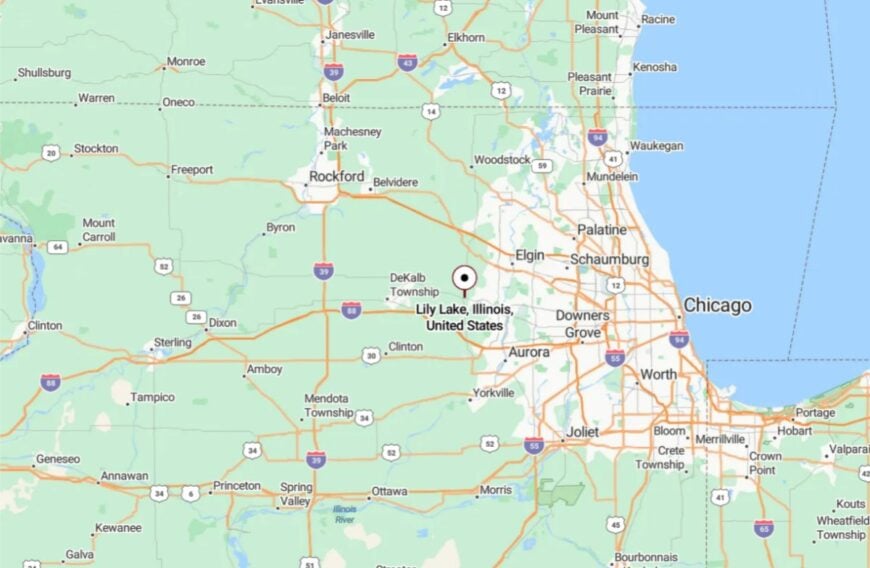
Lily Lake sits in western Kane County, about 12 miles west of St. Charles. It’s accessible via Illinois Route 47 and Empire Road, both of which curve gently through farmland and open sky.
The absence of direct interstate access keeps traffic light. Arriving here feels like easing into a painting of the rural Midwest.
19. Big Rock: Prairie Horizons and a One-Stop Main Street
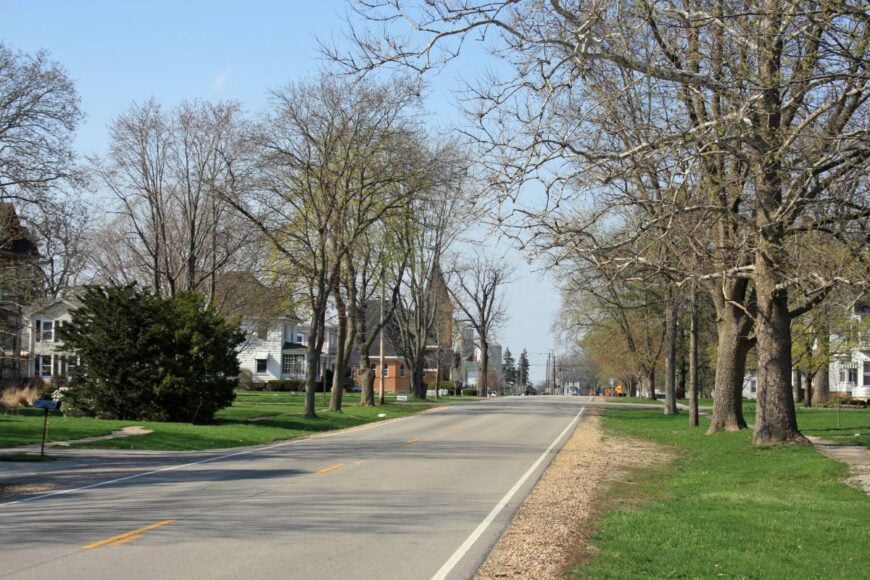
Big Rock, with roughly 1,200 residents, sits amid the rolling farmland of Kane County like a quiet island in a sea of corn and soybeans. Its small downtown offers the essentials—a café, a post office, and a feed store—while the rest of the village is a patchwork of farmsteads, barns, and century-old trees.
Residents gather at the Big Rock Plowing Match each fall, a local tradition that blends agricultural pride with community spirit. The village’s seclusion stems from its distance from major shopping centers and the absence of chain businesses, leaving skies and horizons untouched by neon.
Even the residential areas feel rural, with wide yards and fields stretching to the horizon. At sunset, the prairie turns gold, and the whole town seems to slow its breath. It’s the kind of place where the space around you feels almost limitless.
Where is Big Rock?
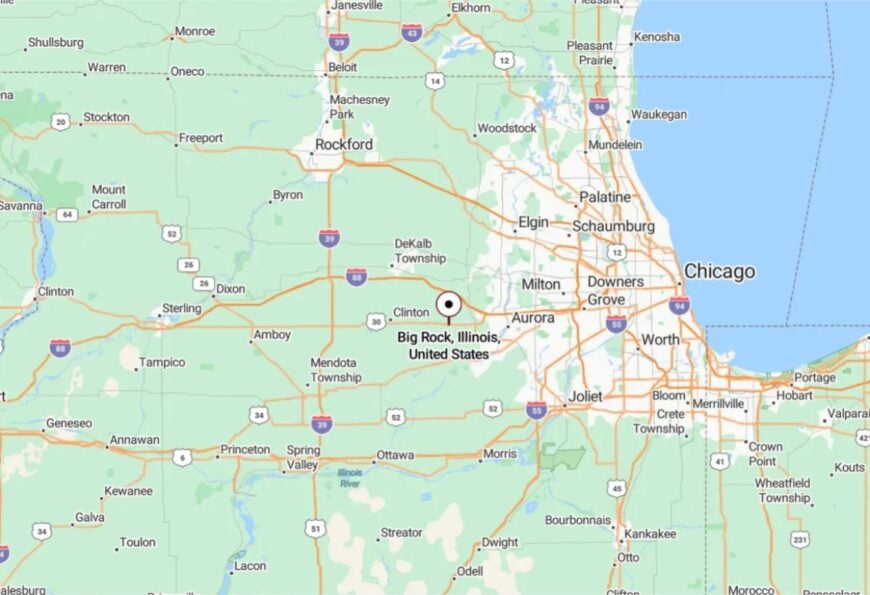
Big Rock is located in western Kane County, about 15 miles southwest of Aurora. It’s accessed via US Route 30, a two-lane road that threads past fields and farmhouses before arriving in the village.
The nearest interstate is I‑88, but it lies far enough north to keep traffic noise away. The approach feels open and airy, with the skyline shared by grain silos and migrating geese.
18. Poplar Grove: An Agricultural Hamlet with an Airfield View
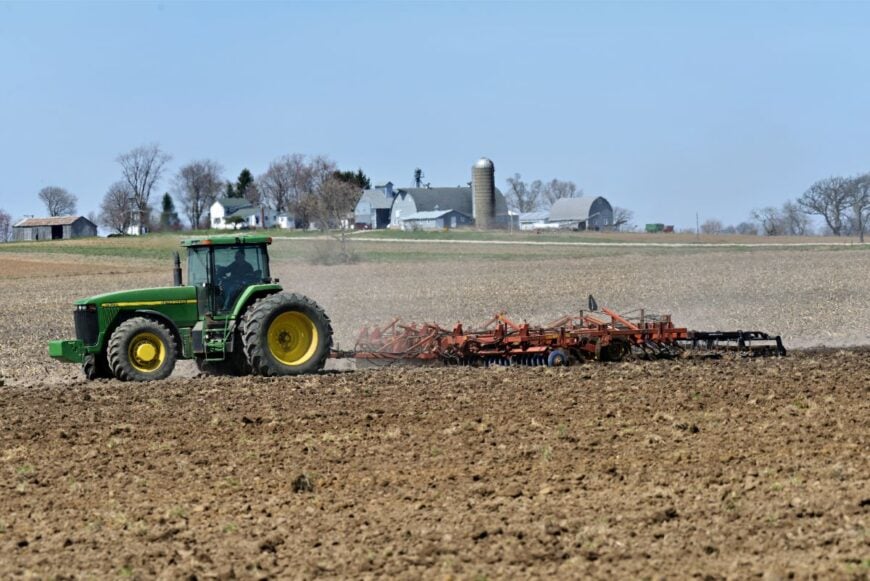
Poplar Grove blends the quiet of a farm community with the unique presence of a small private airport. Its 5,000 residents are spread across subdivisions, farmsteads, and open fields. On weekends, locals might browse the open-air market at Edwards Apple Orchard, cycle along rural roads, or watch vintage planes take off under a wide prairie sky.
The economy leans on agriculture and small businesses, with tourism peaking during apple harvest season. While larger than a hamlet, Poplar Grove’s low density and abundant farmland keep it feeling secluded.
The sunrises here spill across the horizon in uninterrupted color. It’s a town where the sense of space is as abundant as the crops.
Where is Poplar Grove?
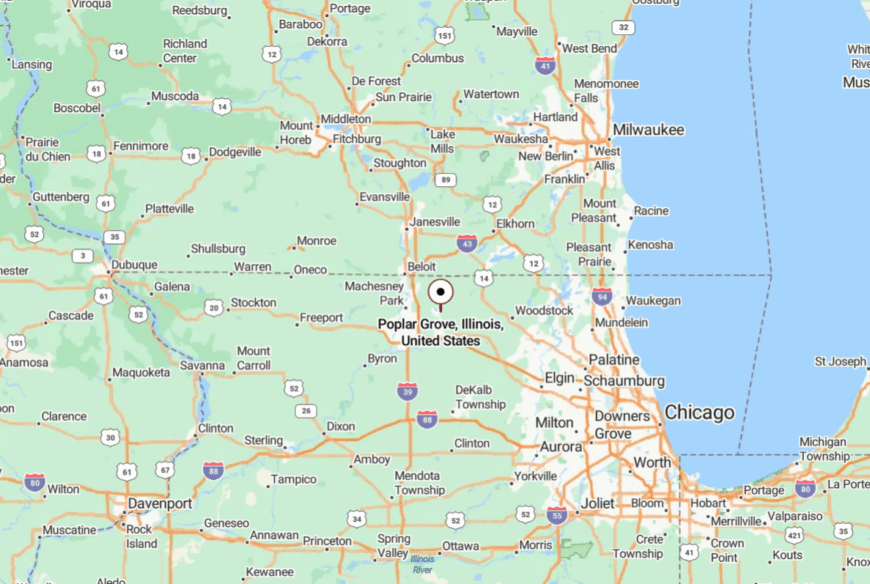
Poplar Grove is in Boone County, north of Belvidere and south of the Wisconsin border. It’s accessible from Illinois Route 76 or Route 173, both of which carry light traffic through open countryside.
The nearest interstate is I‑90, but it lies far enough away to preserve the town’s quiet. Driving in, you’re greeted by silos and wide fields that stretch to the horizon.
17. Sheridan: Riverfront Calm in a Tucked-Away Corner
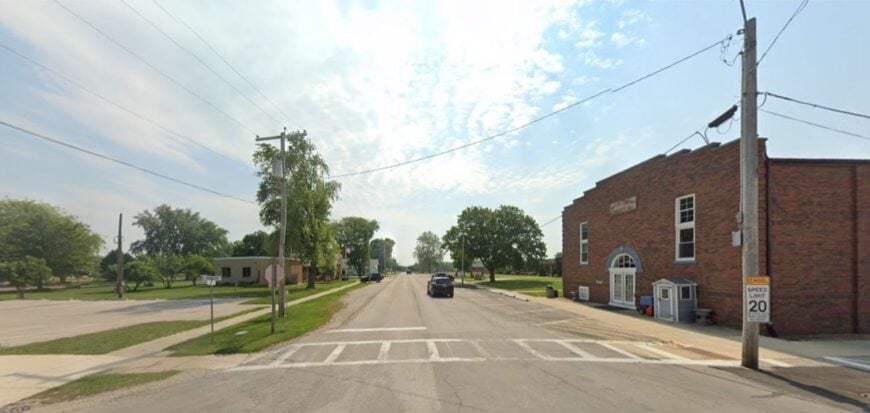
Sheridan’s 2,500 residents enjoy a riverside setting that feels worlds away from city rush. The Fox River curves around town, offering fishing, kayaking, and lazy afternoons on shaded banks.
The small downtown is anchored by a handful of cafés, a library, and a post office where news still travels by conversation. Agriculture remains a strong economic base, but outdoor recreation brings in seasonal visitors.
Its seclusion comes from the river bends and surrounding farmland that naturally block major roadways. In Sheridan, life is paced by the water—slow, steady, and reflective. It’s a place that invites you to linger a little longer than planned.
Where is Sheridan?
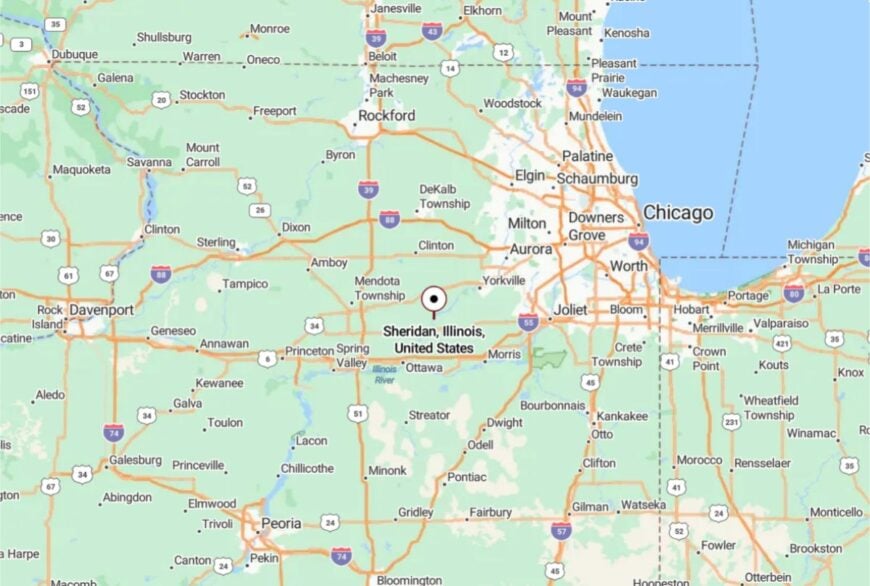
Sheridan is in LaSalle County, about 15 miles south of Sandwich and far from any interstate. The main access road is Illinois Route 71, which meanders through farmland before dropping into the river valley.
The nearest major city, Aurora, is nearly 30 miles away. Approaching town, the tree-lined bluffs make it feel like you’ve entered a private retreat.
16. Millbrook: A Hidden Gem Along the Fox River
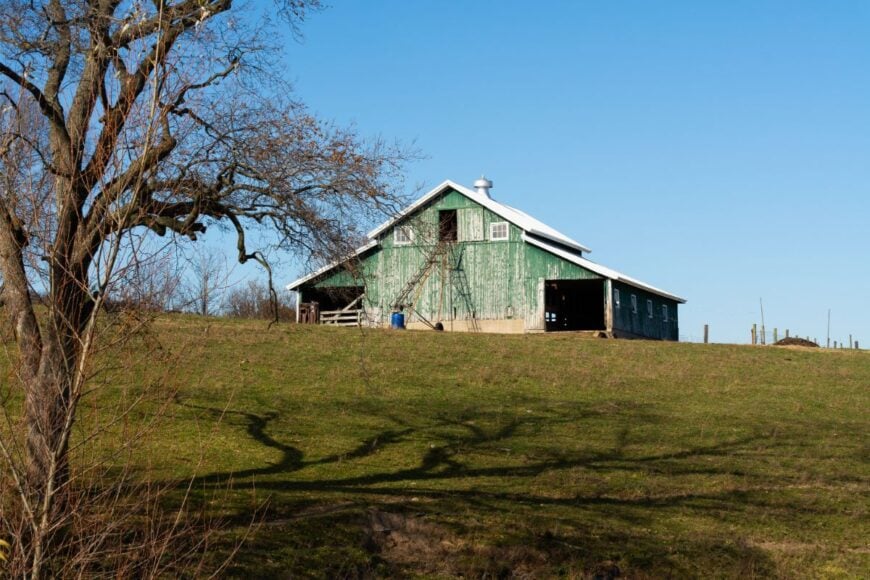
Millbrook’s fewer than 400 residents enjoy a secluded village wrapped in forest preserve lands and river bends. Trails in the nearby Silver Springs State Fish and Wildlife Area attract hikers, birders, and anglers in every season.
The village itself has no commercial strip, relying instead on small farms and home businesses. Its compact size and lack of through-traffic keep it remarkably quiet, even in summer. Houses here are set back from the road, often hidden behind trees, giving each property a tucked-away feel.
The air smells of wildflowers in spring and woodsmoke in fall. Millbrook is a town that feels like it belongs entirely to those who live there.
Where is Millbrook?
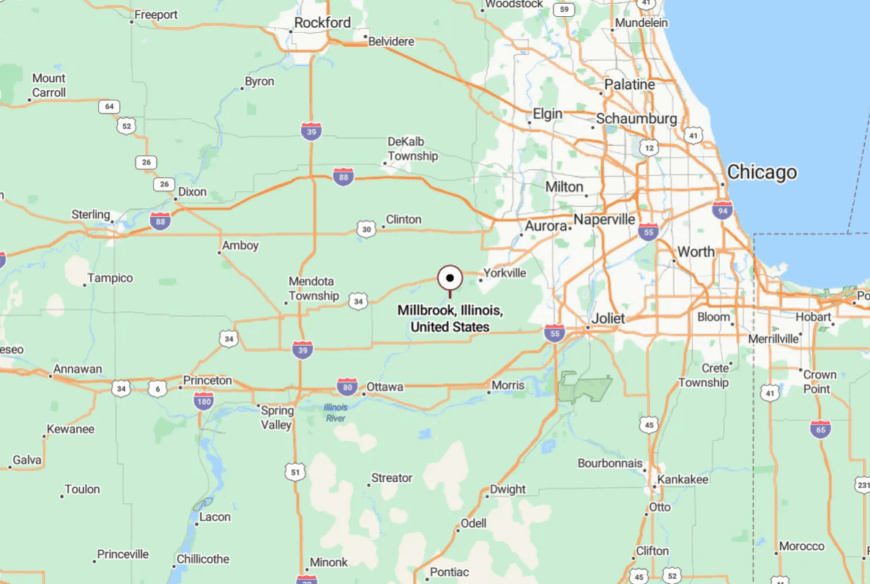
Millbrook is in Kendall County, southwest of Yorkville, and sits directly along the Fox River. It’s accessed by Millbrook Road, which narrows as it approaches the village from Illinois Route 71.
With no direct interstate access, it remains far from the path of casual travelers. Arriving here feels like crossing a threshold into nature’s quiet.
15. Newark: Prairie Sky and Main Street Friendliness
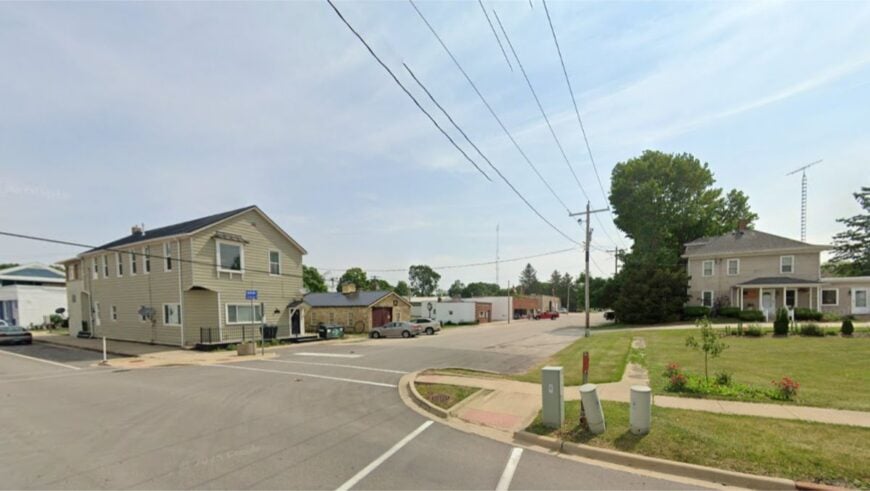
Newark’s 1,000 residents live under some of the biggest skies in Illinois, surrounded by farmland and open prairie. The main street offers a grocery, a diner, and a handful of family-run shops where everyone knows each other.
Summers bring small-town festivals, while winters mean crisp, silent nights and unbroken views of the stars. Agriculture dominates the economy, with corn and soybean fields defining the landscape.
The absence of large developments ensures that traffic never disturbs the peace. Newark’s charm lies in its ability to stay simple in a world that’s grown complex. It’s a place where a handshake still seals a promise.
Where is Newark?
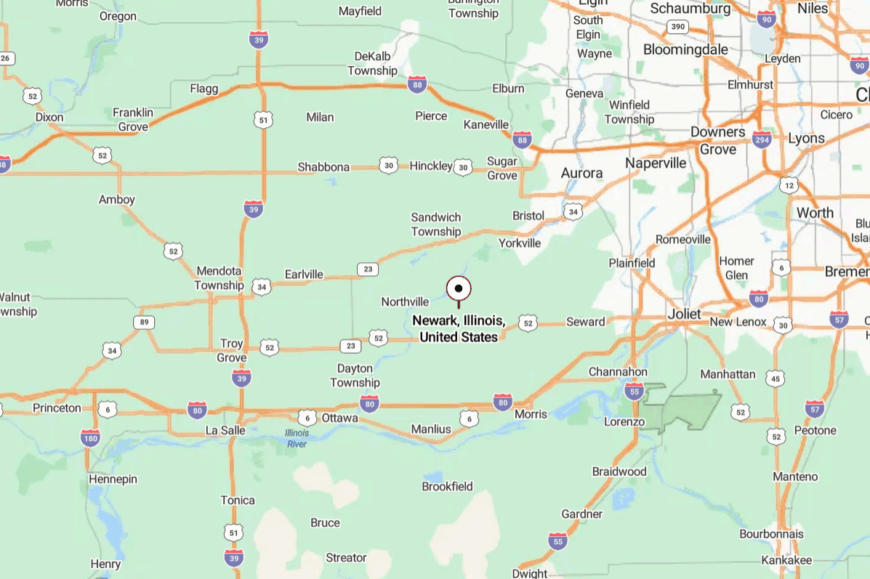
Newark is in Kendall County, about 20 miles southwest of Yorkville. It’s reached via Illinois Route 71, which threads through gently rolling farmland.
Interstate 80 is nearly 15 miles away, insulating the town from commuter traffic. The open approach leaves no doubt you’ve entered deep rural Illinois.
14. Serena: River Valley Farms and Gentle Isolation
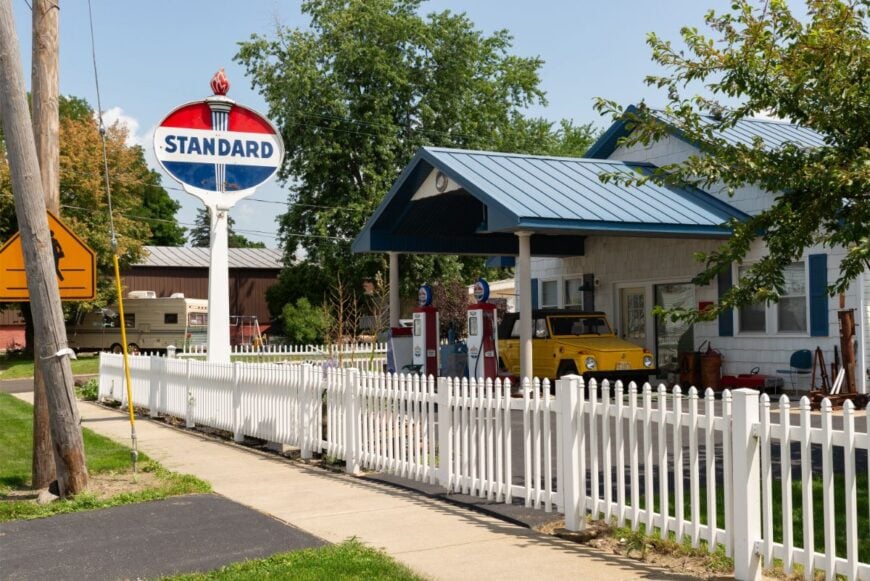
Serena’s 1,100 residents share a landscape defined by the Fox River Valley’s gentle curves and fertile fields. The town’s pace is unhurried, with mornings often beginning at the grain elevator or the schoolhouse.
Fishing, canoeing, and hiking fill weekends, while the surrounding farmland ensures a steady agricultural heartbeat. Its isolation is bolstered by the river and the fact that no major highways cut directly through.
Houses are spaced wide apart, with big yards and deep porches made for lingering. At dusk, the horizon glows pink over corn tassels. Serena is the kind of place where time seems to take the long way around.
Where is Serena?
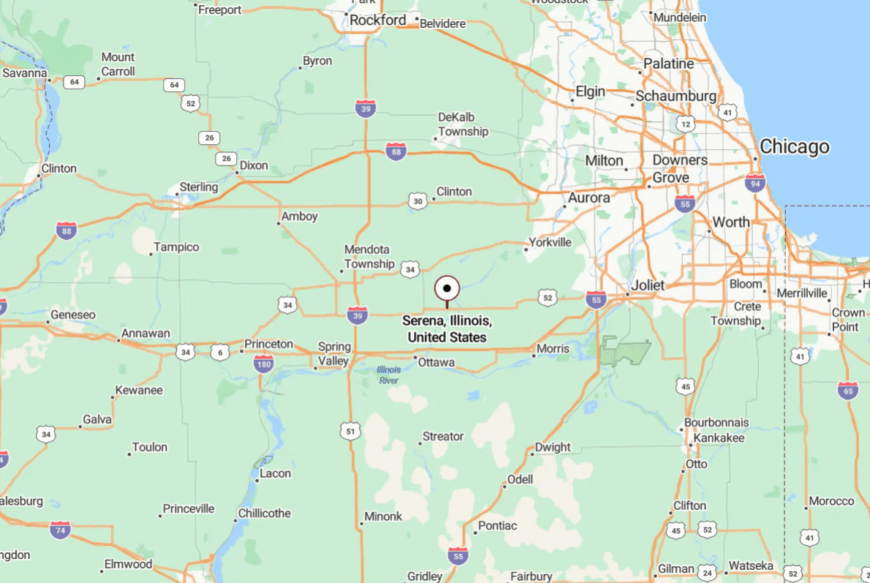
Serena lies in LaSalle County, about 12 miles south of Ottawa. Access is via Illinois Route 23, followed by smaller county roads that wind down into the river valley.
The nearest interstate is I‑80, more than 15 minutes north. Approaching from any direction means passing through stretches of uninterrupted farmland.
13. Paw Paw: A Crossroads Village in the Prairie Sea
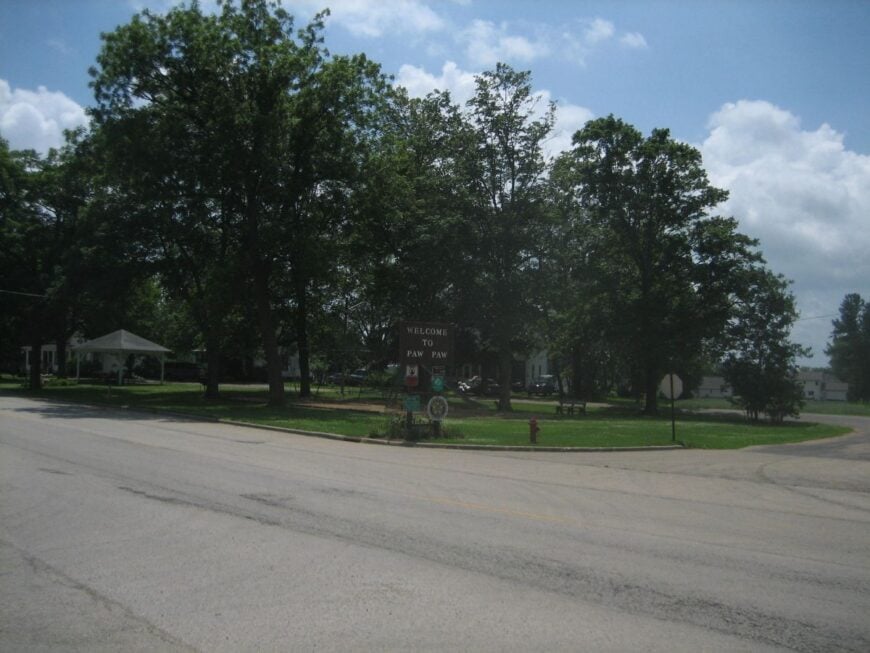
Paw Paw’s roughly 850 residents live in a village that feels both wide open and tucked away. Surrounded by endless prairie, the town boasts a few essentials—a post office, a café, and a grain elevator that dominates the skyline.
Residents fish in local ponds, tend sprawling gardens, or head to nearby Shabbona Lake for boating. The absence of chain stores or heavy traffic preserves its sense of solitude. Farming is the mainstay here, and seasonal rhythms mark the passing year.
On clear nights, you can see the Milky Way without leaving your porch. Paw Paw feels like a village that could have been lifted from another century.
Where is Paw Paw?
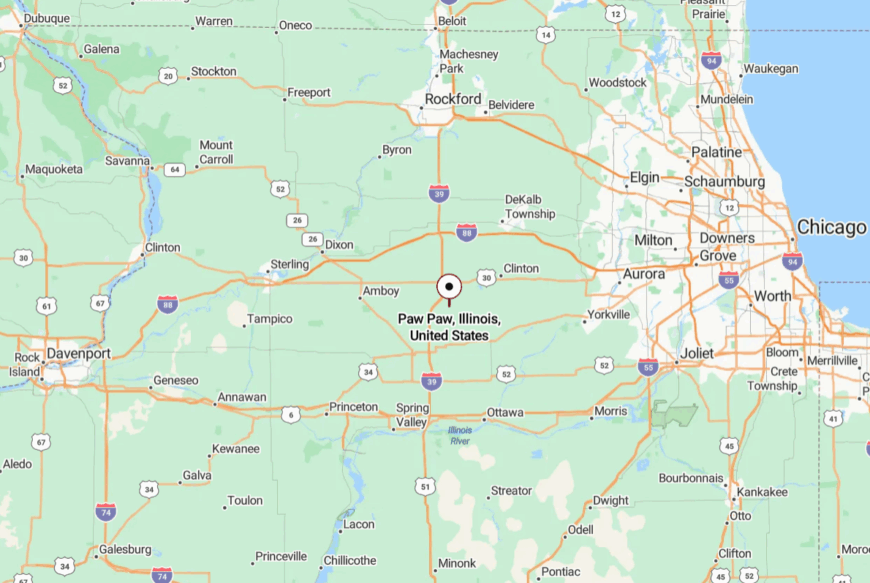
Paw Paw is in Lee County, about 30 miles south of Rockford and west of DeKalb. It’s reached via US Route 30, a two-lane road that passes through open prairie. Interstate 39 is about 10 minutes east but far enough to leave the town undisturbed. The approach is a gradual reveal of silos rising from the flat horizon.
12. Kaneville: Farmland Quiet in the Heart of Kane County
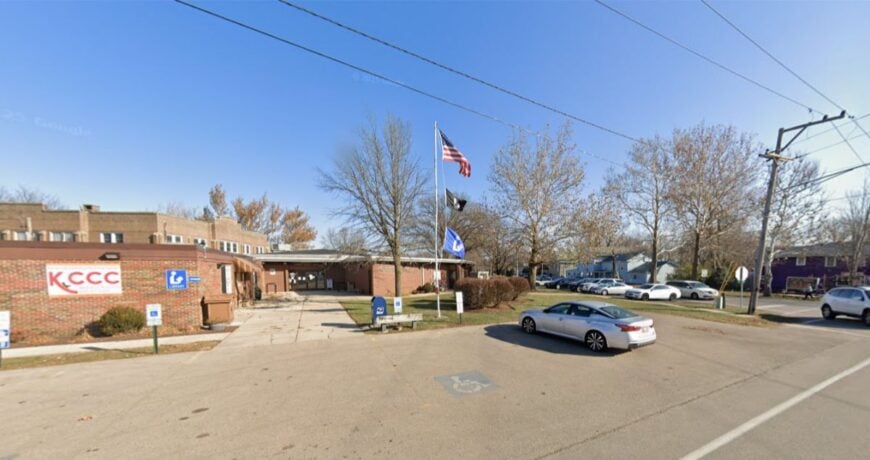
Kaneville, home to fewer than 500 residents, sits tucked between sweeping fields and narrow country lanes where traffic is almost nonexistent. The air here smells faintly of tilled soil in spring and sun‑warmed hay in summer, and the village’s pace hasn’t changed much in generations.
Residents gather at the tiny community center, enjoy pie at the local café, and cheer at small‑scale baseball games in the park. Farming is the backbone of life, with corn and soybean fields stretching to the horizon. There are no shopping centers or chain stores—just a post office, a church, and the occasional farmstand.
Nights are lit only by porch lamps and starlight, giving Kaneville a peacefulness that’s hard to come by in northeastern Illinois. It’s the kind of place where the world feels bigger simply because it’s so still.
Where is Kaneville?
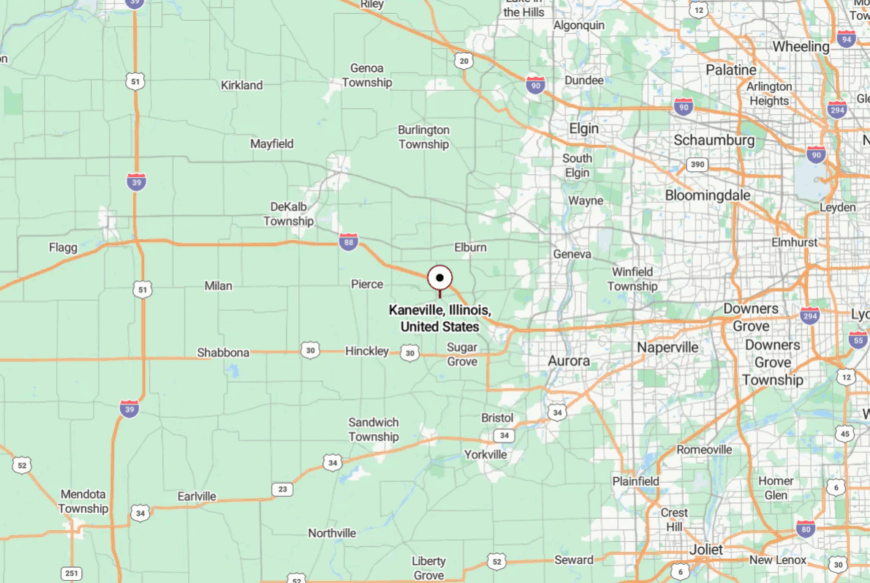
Kaneville lies in southwestern Kane County, about 10 miles south of Elburn and 15 miles north of Plano. It’s reached via Illinois Route 47, followed by a turn onto smaller county roads that cut through farmland.
The lack of direct interstate access keeps traffic light and visitors few. Once you arrive, it’s easy to see why so many here never feel the urge to leave.
11. Somonauk: Lakefront Leisure and Country Stillness
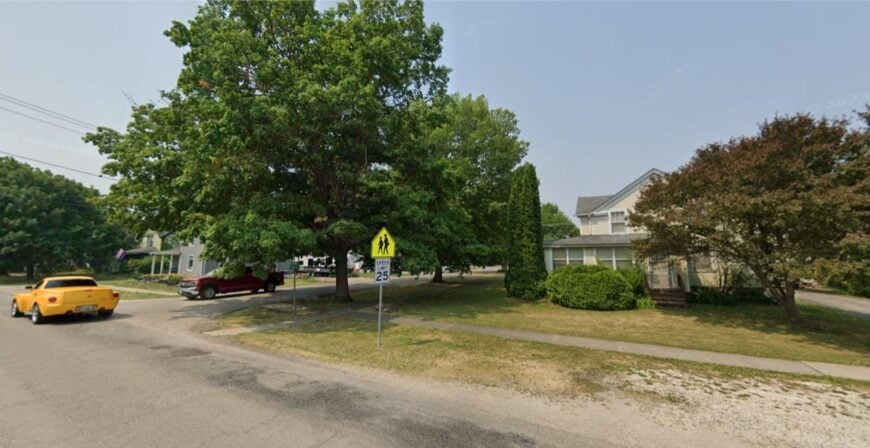
Somonauk’s 1,800 residents enjoy the rare blend of small-town friendliness and access to a peaceful lake. Shabbona Lake State Park lies nearby, offering fishing, hiking, and birdwatching in all seasons.
Downtown Somonauk is a short strip with diners, antique shops, and a market that serves as the town’s meeting point. Agriculture surrounds the village, but the presence of the lake adds a layer of recreation uncommon in the region.
The town’s slower pace is protected by distance from large cities and highways. Even in summer, the lakefront feels calm, with more herons than jet skis. It’s a place where you can hear your own thoughts and like what you hear.
Where is Somonauk?
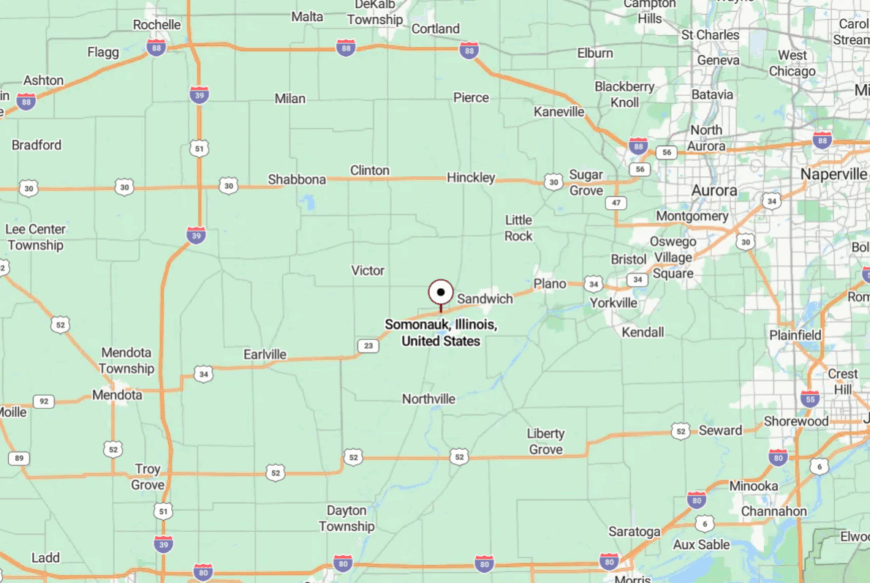
Somonauk spans DeKalb and LaSalle Counties, about 25 miles south of DeKalb. It’s accessible via US Route 34, which winds through farmland before dipping toward the lake.
Interstate 88 is nearly 20 minutes north, insulating the town from heavy commuter flow. As you approach, the transition from open fields to shimmering water feels like an exhale.
10. Garden Prairie: Serene Environment Away from the City
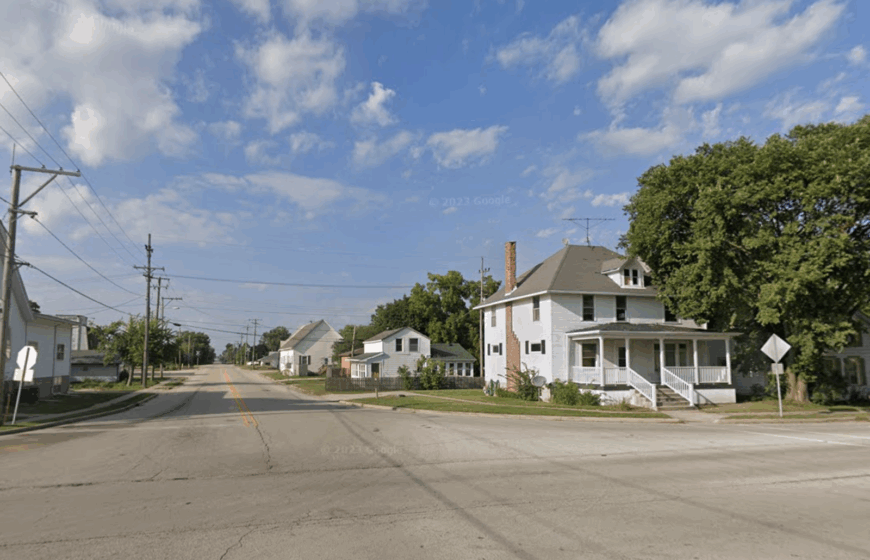
Garden Prairie is a small unincorporated community with a population of around 350 people. I’ve found it to be a peaceful place where you can enjoy the simplicity of rural life.
There’s not much in terms of commercial attractions, but that’s part of its charm. It’s an ideal spot for those who appreciate open spaces, as it’s surrounded by expansive farmland and countryside.
The main industries here are agriculture and some local businesses that cater to the community. What makes Garden Prairie secluded is its quiet atmosphere and the fact that it’s off the beaten path, providing a serene environment away from city noise.
Where is Garden Prairie?
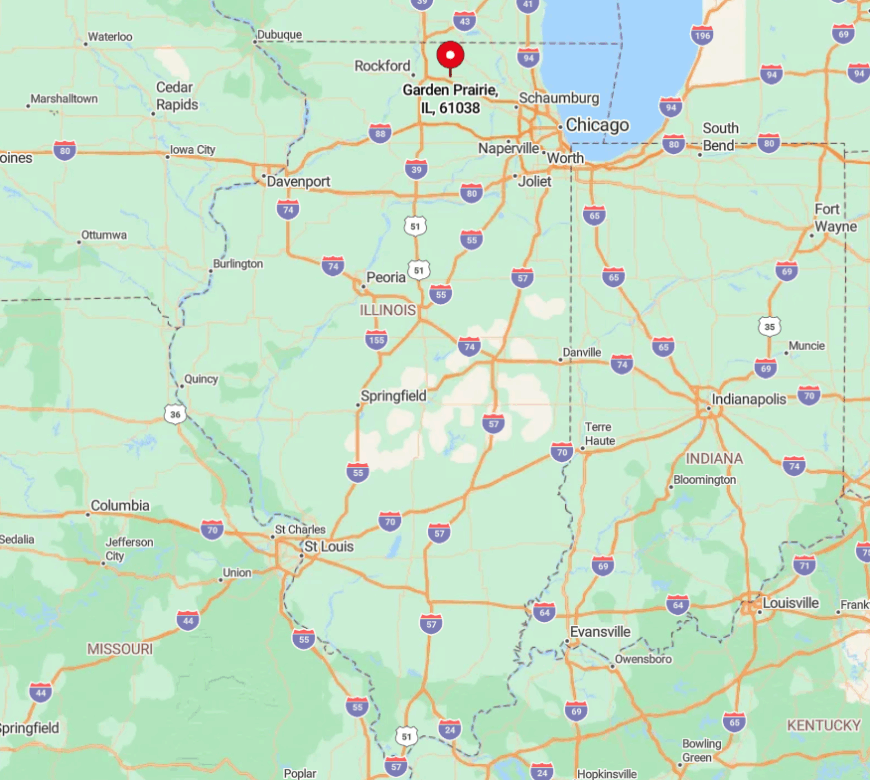
Garden Prairie is located in Boone County, just east of Belvidere, Illinois. Its seclusion comes from being nestled amidst vast stretches of farmland, with no major highways running directly through it.
To get there, you can take US Route 20 and turn onto local roads that lead into the heart of the community. The absence of heavy traffic and commercial development makes it a haven for those looking to escape into a peaceful rural setting.
9. Richmond: Gateway to the North with Rustic Charm
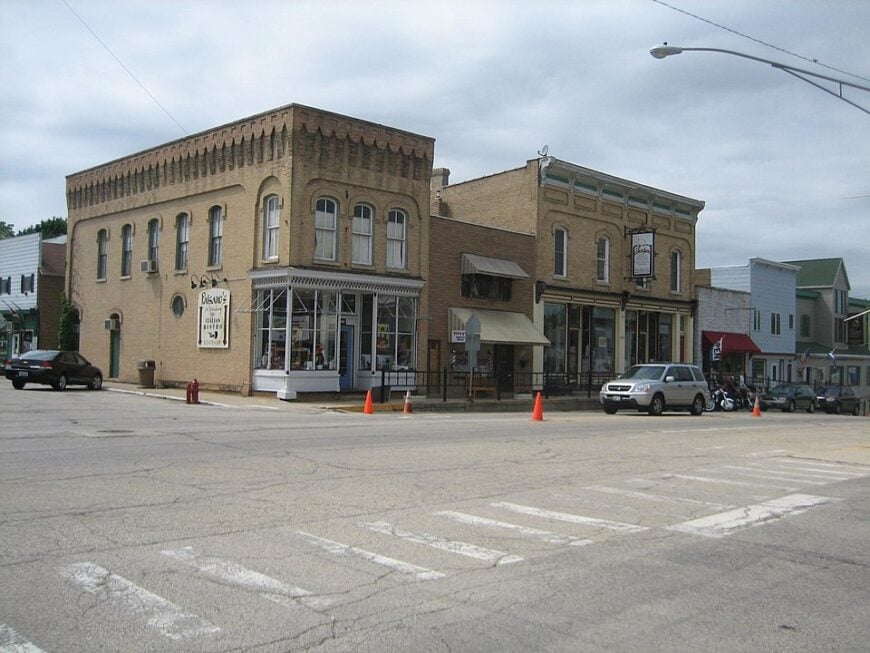
Richmond is a village with a population of about 1,900 residents. I love its rustic charm, characterized by historic buildings and a quaint downtown area. You can explore antique shops, enjoy a meal at local eateries, or visit nearby nature preserves like the Elizabeth Lake Nature Preserve.
The main industries include small businesses and tourism, especially given its proximity to Wisconsin. Richmond’s seclusion is due to its location away from bustling cities and its preservation of small-town character, making it a quiet retreat.
Where is Richmond?
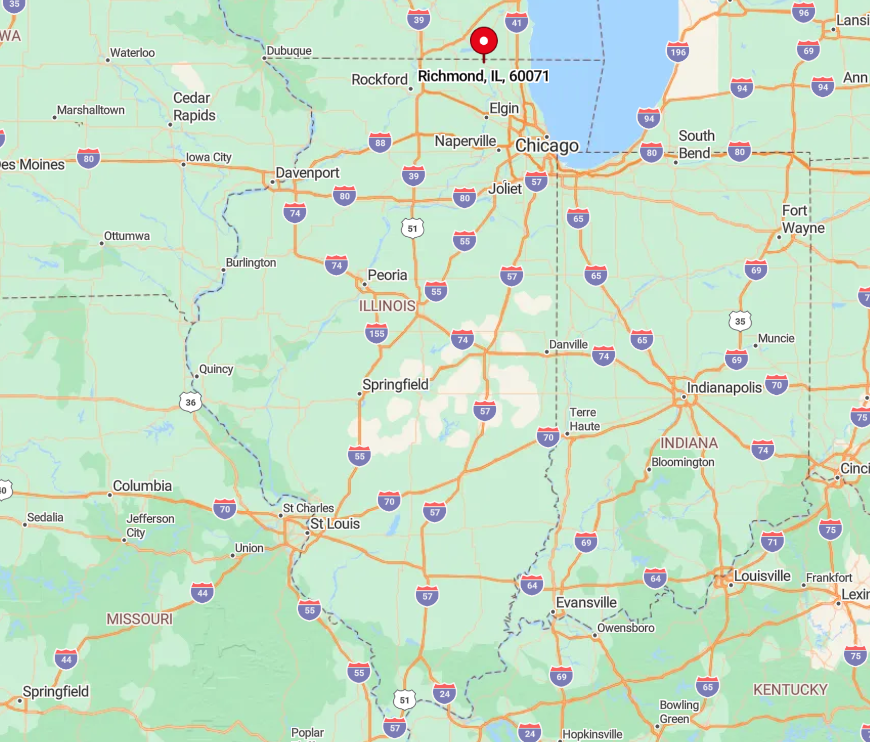
Situated in McHenry County near the Wisconsin border, Richmond serves as a gateway to the north. It’s off Illinois Route 173 and US Route 12, which are less congested than major interstates.
The village is surrounded by natural landscapes and farmlands, enhancing its secluded feel. Getting there involves a pleasant drive through scenic routes, further contributing to its appeal as a peaceful destination.
8. Hebron: Peaceful Retreat Amid Farmland
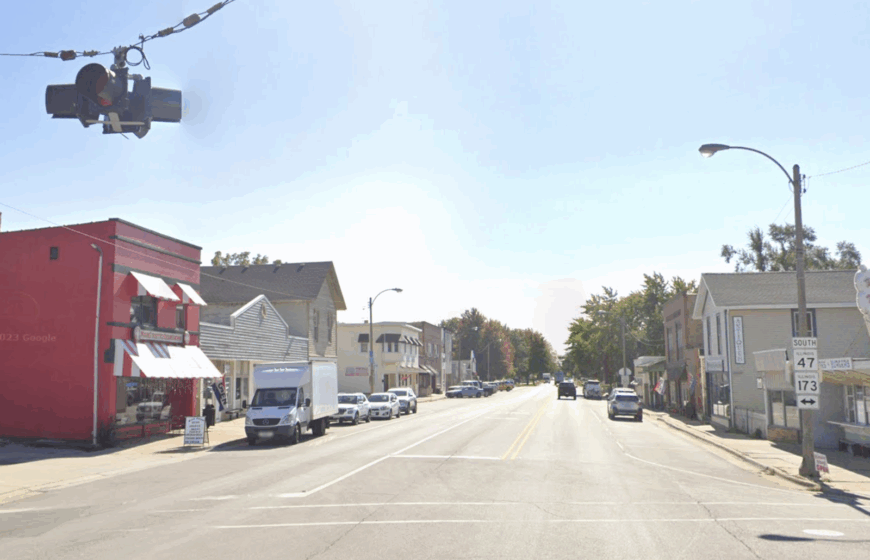
Hebron is a tiny village with around 1,200 inhabitants. I’ve always appreciated its peaceful atmosphere, surrounded by expansive farmland and open skies. There aren’t many tourist attractions, but the Hebron Water Tower is a notable landmark celebrating the local high school’s historic basketball championship in 1952.
Agriculture is the primary industry, with many residents involved in farming or related businesses. Its seclusion stems from its rural setting and small population, offering an escape from crowded areas.
Where is Hebron?
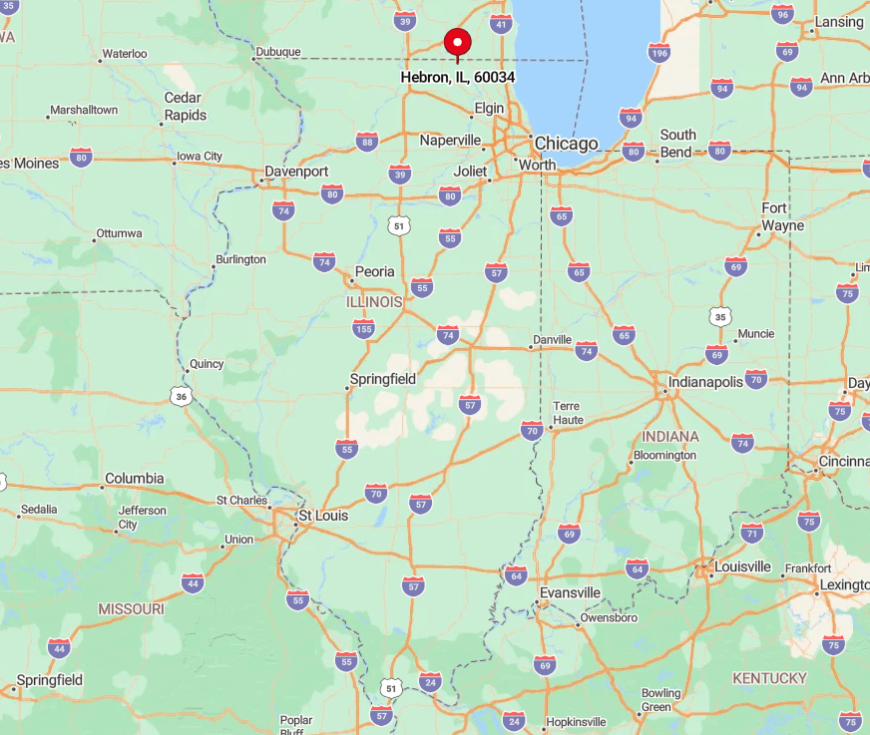
Located in McHenry County, Hebron is near the Wisconsin border, north of Woodstock. It’s accessible via Illinois Route 47 but remains off major highways, contributing to its secluded nature.
The village’s location amid vast agricultural lands means minimal traffic and development around it. To reach Hebron, you’ll navigate country roads that showcase the area’s natural beauty, making the journey part of the tranquil experience.
7. Union: Small-Town Feel with Rich Heritage

Union is a village of about 600 people, offering a rich historical backdrop. One of my favorite spots is the Illinois Railway Museum, the largest of its kind in the country. The village also hosts the McHenry County Historical Society Museum.
The main industries revolve around tourism related to these attractions and local businesses serving the community. Union’s small size and emphasis on preserving history contribute to its secluded and intimate atmosphere.
Where is Union?
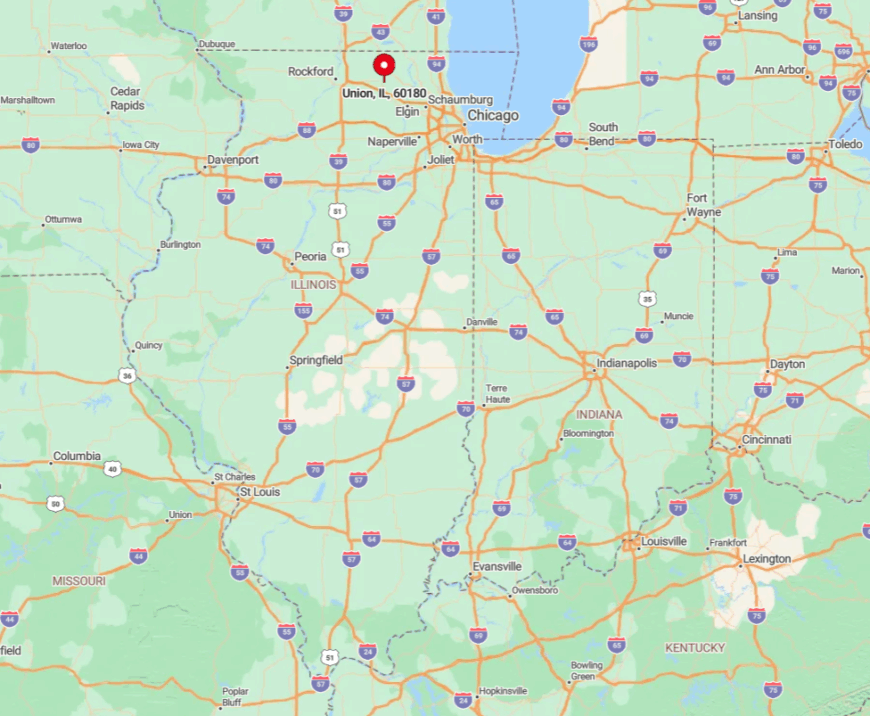
Union is situated in McHenry County, west of Huntley and southeast of Marengo. It’s accessible via US Route 20 and Illinois Route 176 but remains away from major urban centers.
The village’s location amid rural landscapes and absence of sprawling development enhance its seclusion. Reaching Union involves traversing peaceful country roads, making it a delightful escape into Illinois’s historical countryside.
6. Campton Hills: Scenic Vistas and Quiet Roads
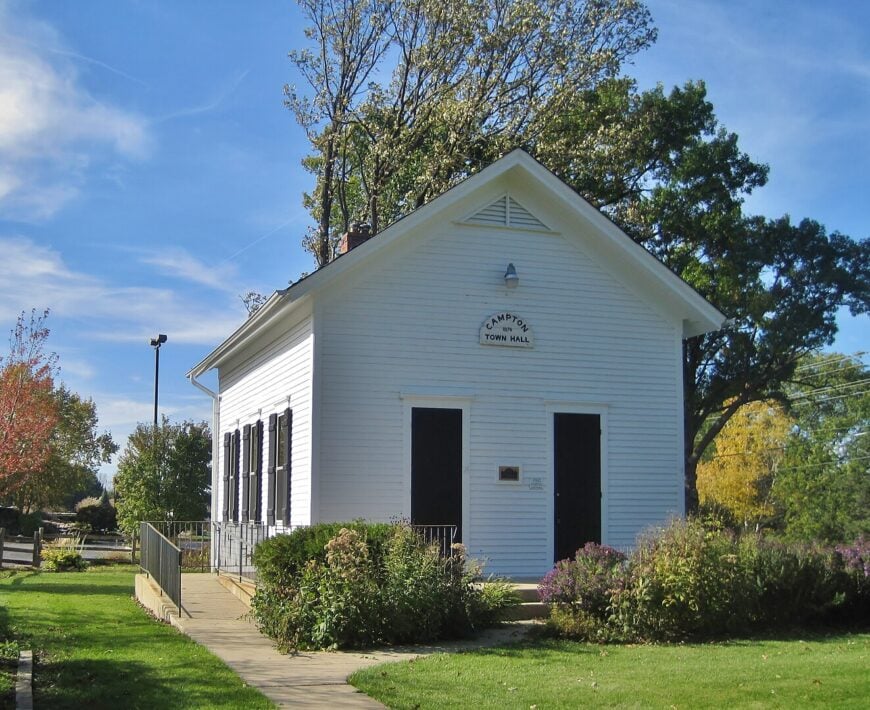
Campton Hills, with a population of approximately 11,000, offers scenic vistas that I’ve found perfect for leisurely drives and bike rides. The town is committed to preserving its natural landscapes, including prairie paths and open spaces like the Corron Farm.
While primarily residential, some local businesses and farms contribute to the economy. Its seclusion comes from controlled development and an emphasis on maintaining a rural character amidst suburban expansion.
Where is Campton Hills?
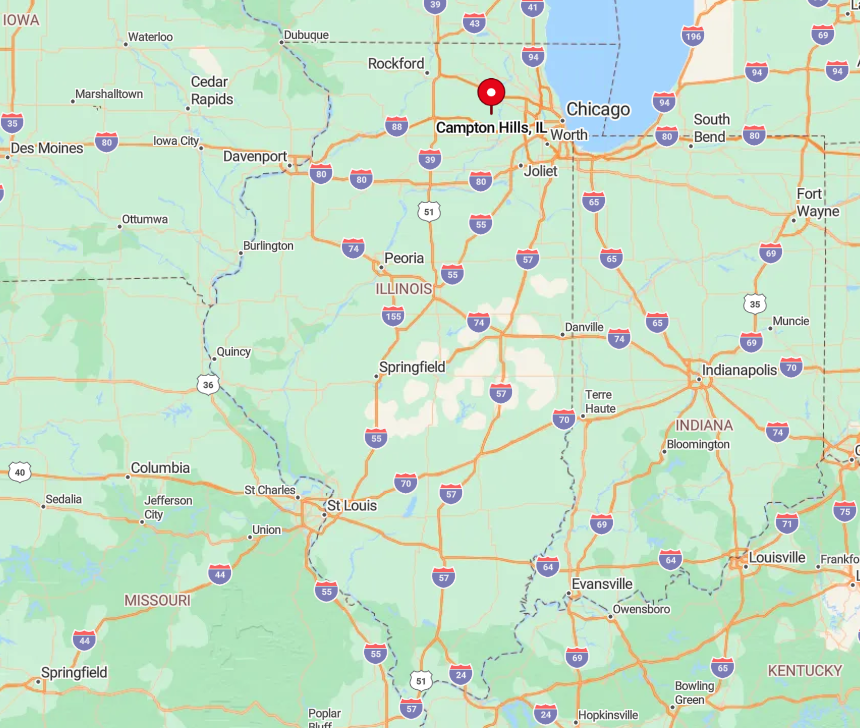
Located in Kane County, west of St. Charles, Campton Hills is accessible via Illinois Route 64. Its distance from major highways and urban centers helps maintain its tranquil environment.
The village is surrounded by natural preserves and farmland, which buffer it from the noise and congestion of larger towns. Getting there involves a scenic drive through the countryside, enhancing its appeal as a secluded destination.
5. Prairie Grove: Countryside Living Near the Fox River
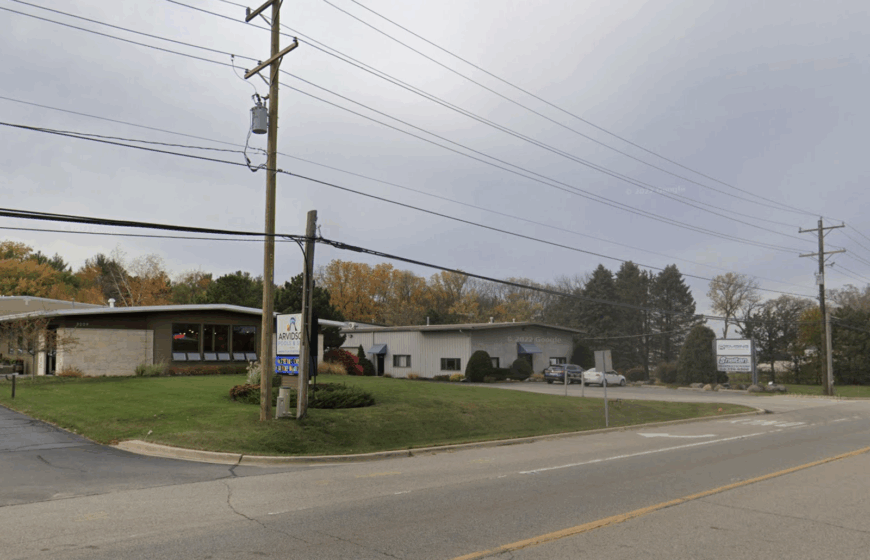
Prairie Grove is a village of about 1,900 residents nestled near the Fox River. I enjoy its blend of natural beauty and quiet residential areas. Outdoor activities like hiking and fishing are popular, especially in nearby conservation areas such as the Prairieview Education Center.
The village has limited commercial development, and the main industries are local services and small businesses. Its secluded nature is due to its emphasis on preserving green spaces and low-density housing.
Where is Prairie Grove?
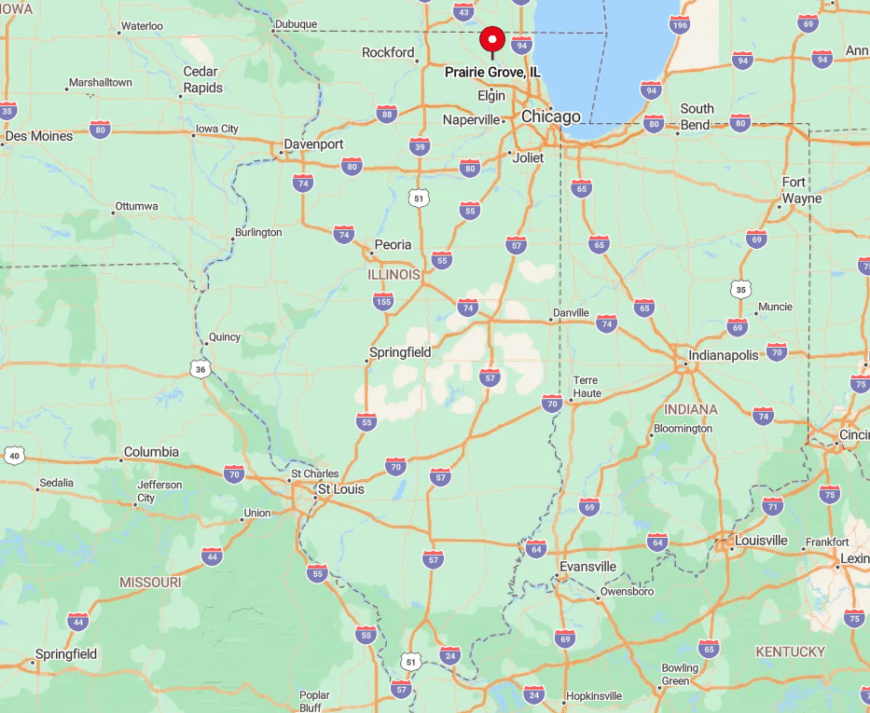
Situated in McHenry County between Crystal Lake and McHenry, Prairie Grove is slightly off the main thoroughfares. It can be reached via Illinois Route 31 and local roads.
The village’s proximity to the Fox River and surrounding woodlands enhances its secluded feel. Accessing Prairie Grove means leaving the busier roads behind, immersing yourself in a landscape of trees and open fields.
4. Wayne: Historic Charm in a Woodland Setting
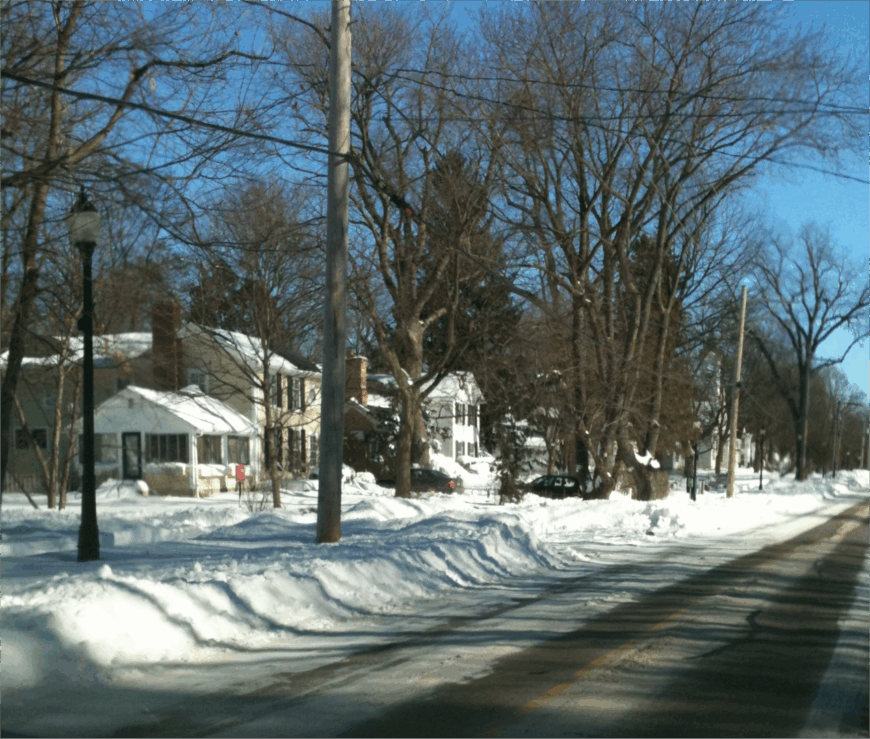
Wayne is a village of about 2,500 people, known for its historic homes and horse farms. I’ve found it to be a picturesque place with a strong equestrian culture, including the Lamplight Equestrian Center.
The village has strict zoning laws to preserve its rural character, and the main industries include equestrian services and local businesses. Wayne’s seclusion is maintained through large lot sizes, dense woodlands, and efforts to keep commercial development minimal.
Where is Wayne?
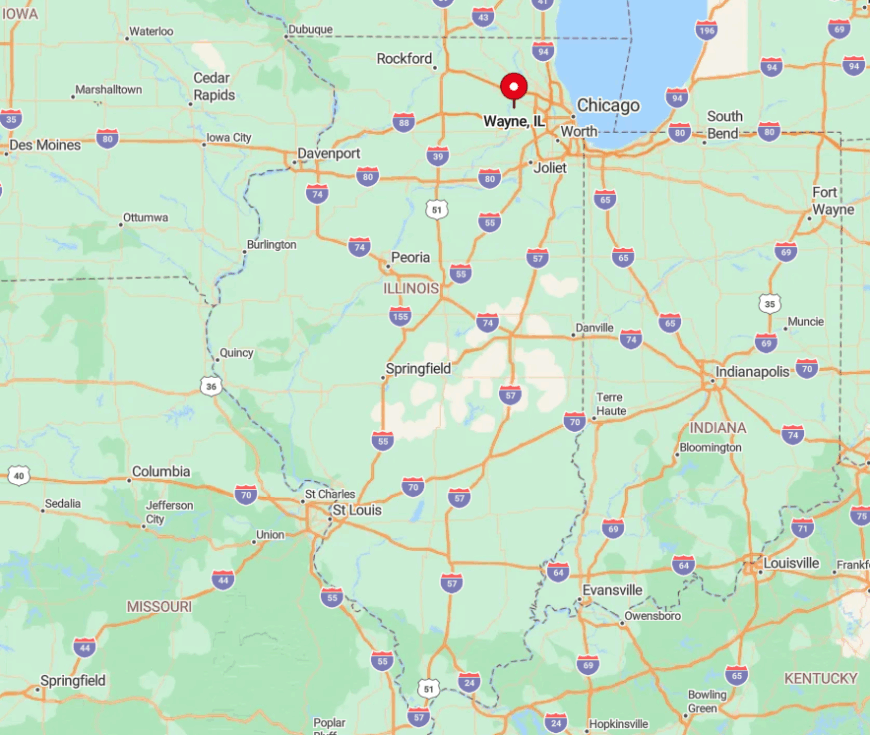
Wayne straddles DuPage and Kane Counties, nestled between St. Charles and Bartlett. It’s accessible via local roads like Army Trail Road but remains hidden from major highways.
The village’s extensive woodlands and horse trails contribute to its secluded ambiance. Getting to Wayne involves meandering through tree-lined streets, making it feel like a world away from the nearby suburbs.
3. Mettawa: Rural Serenity Close to Lake Michigan
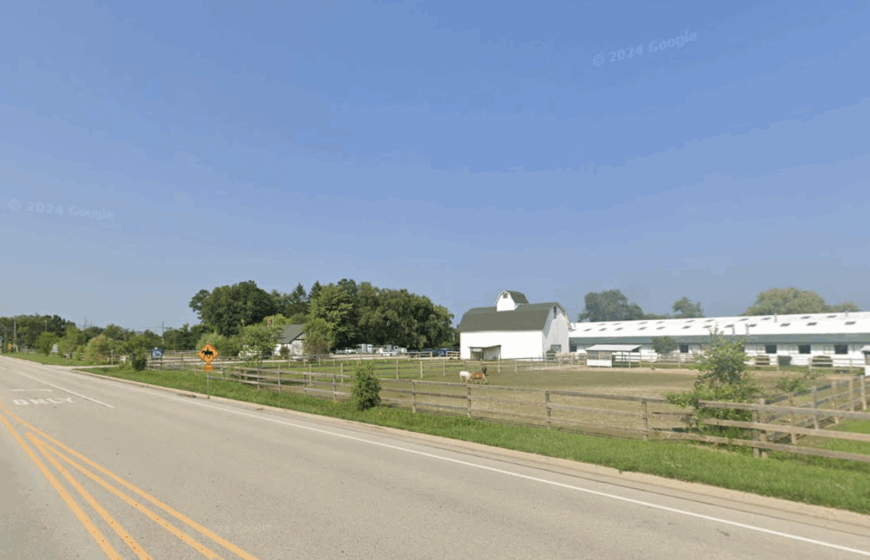
Mettawa is a small village with around 550 residents, offering rural serenity near the bustle of Lake Forest. I appreciate its commitment to preserving open spaces, with numerous forest preserves and trails like the Middlefork Savanna.
The village is primarily residential, and the main industries are limited to local services. Mettawa’s seclusion is due to its large properties, minimal commercial development, and abundant natural areas.
Where is Mettawa?
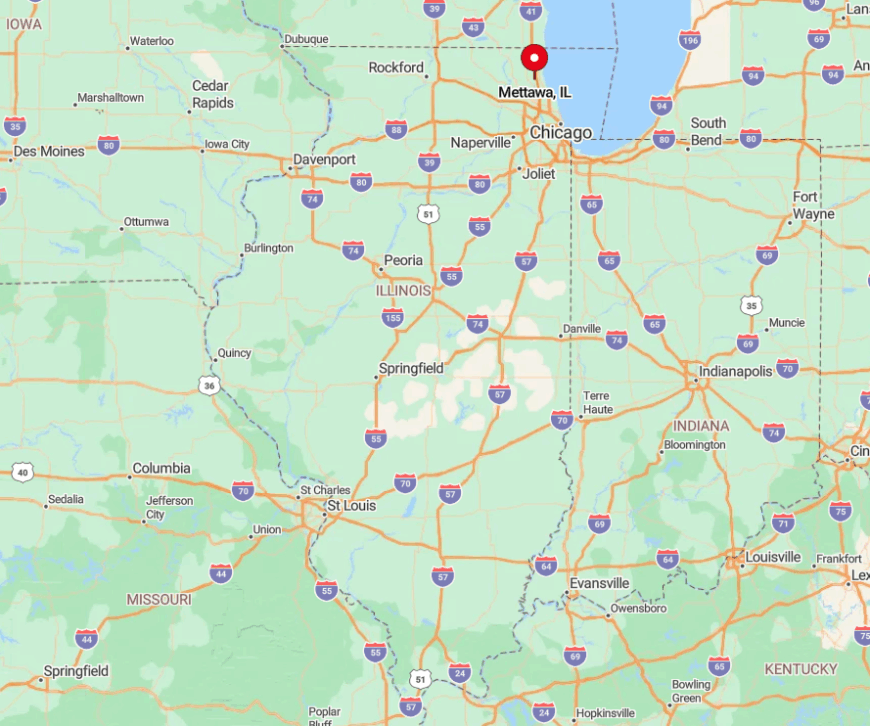
Located in Lake County near the shore of Lake Michigan, Mettawa is accessible via Interstate 94 but retains its secluded feel. The village is surrounded by forest preserves and open lands, buffering it from nearby urban areas.
To reach Mettawa, you exit the highway and wind through quiet roads bordered by nature, underscoring its peaceful setting despite the proximity to Chicago’s northern suburbs.
2. Barrington Hills: Expansive Estates and Equestrian Trails
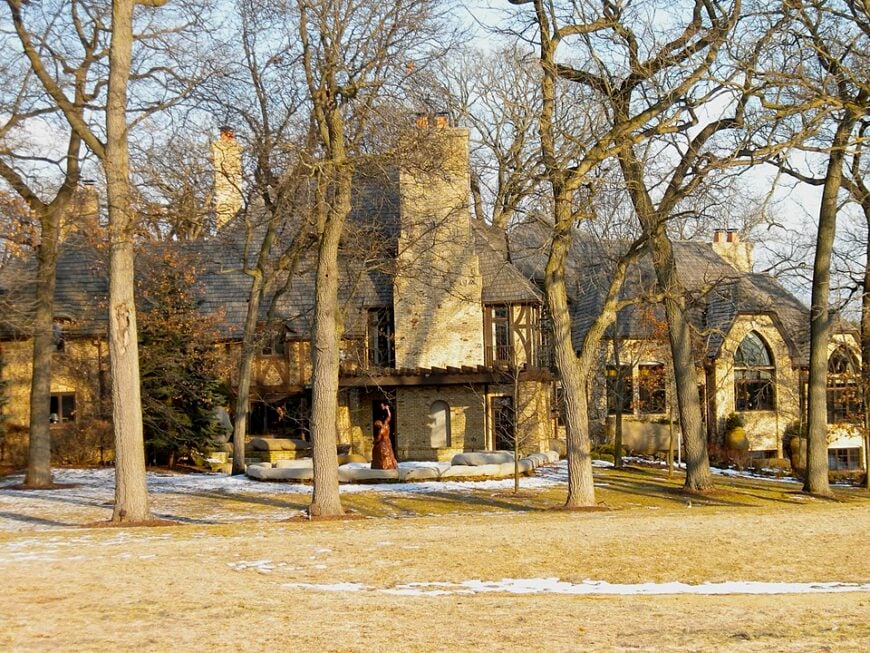
Barrington Hills is home to about 4,200 people and is renowned for its expansive estates and equestrian lifestyle. I enjoy exploring its extensive network of horse trails and natural areas like the Spring Creek Forest Preserve.
The town maintains a rural atmosphere with strict zoning laws favoring large lots. The main industries revolve around equestrian services and upscale residential living. Its seclusion is a result of low-density housing and preservation of open spaces.
Where is Barrington Hills?
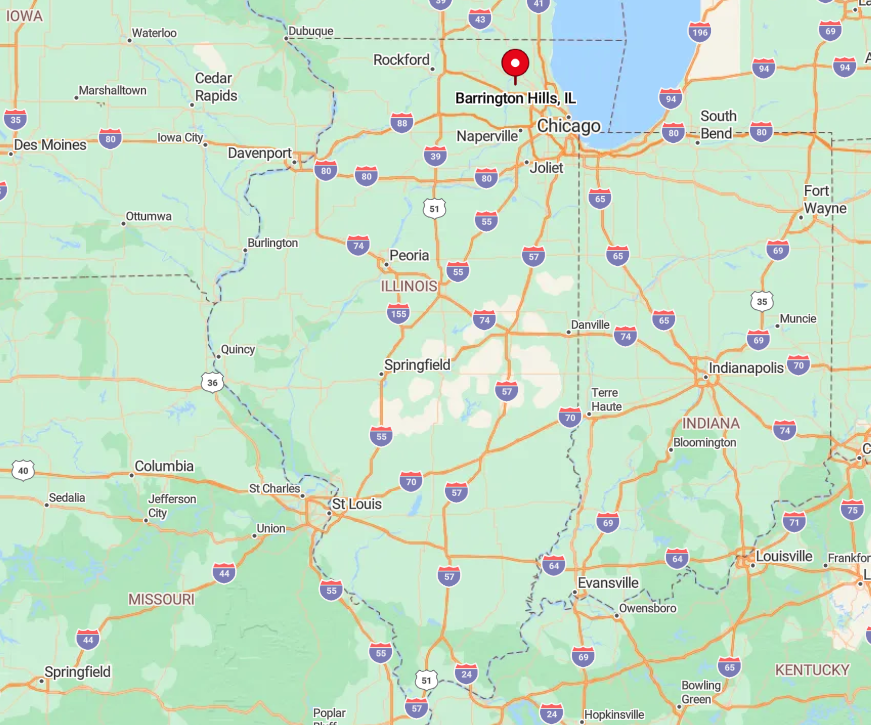
Spanning across Cook, Kane, Lake, and McHenry Counties, Barrington Hills is located northwest of Chicago. It’s accessible via Illinois Route 68 and Barrington Road but is set back from major highways.
The village’s extensive woodlands and rolling hills enhance its secluded nature. Reaching Barrington Hills involves navigating through scenic landscapes, distancing yourself from the congestion of metropolitan areas.
1. Bull Valley: A Hidden Haven Amidst Rolling Hills
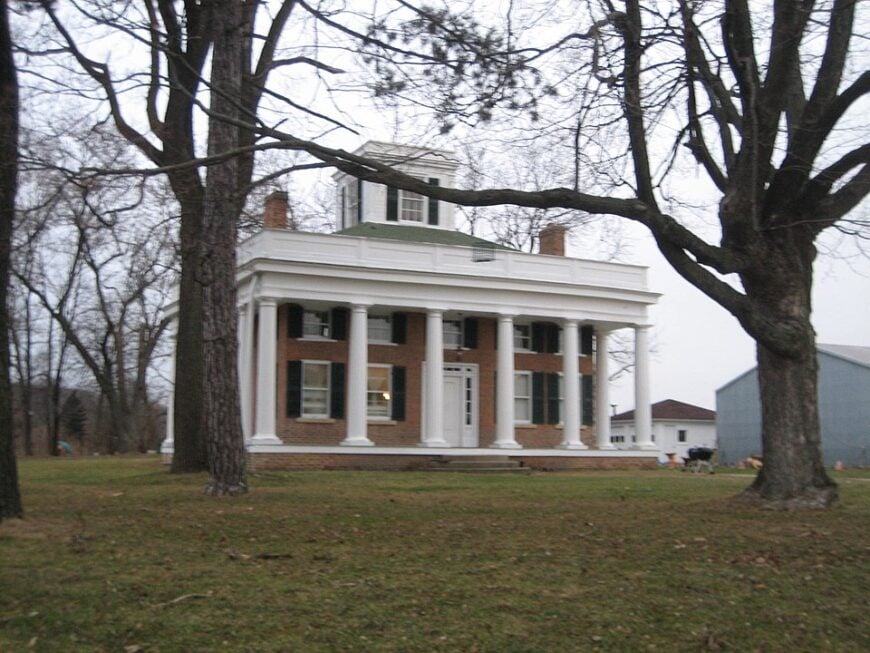
Bull Valley tops my list with a population of about 1,100 residents. It’s a hidden haven characterized by rolling hills, dense forests, and winding country roads. There aren’t commercial districts, but outdoor activities abound, including hiking and horseback riding.
The main industries are residential estate management and equestrian services. Bull Valley’s seclusion is maintained through large property sizes, strict land-use regulations, and a focus on preserving natural landscapes.
Where is Bull Valley?
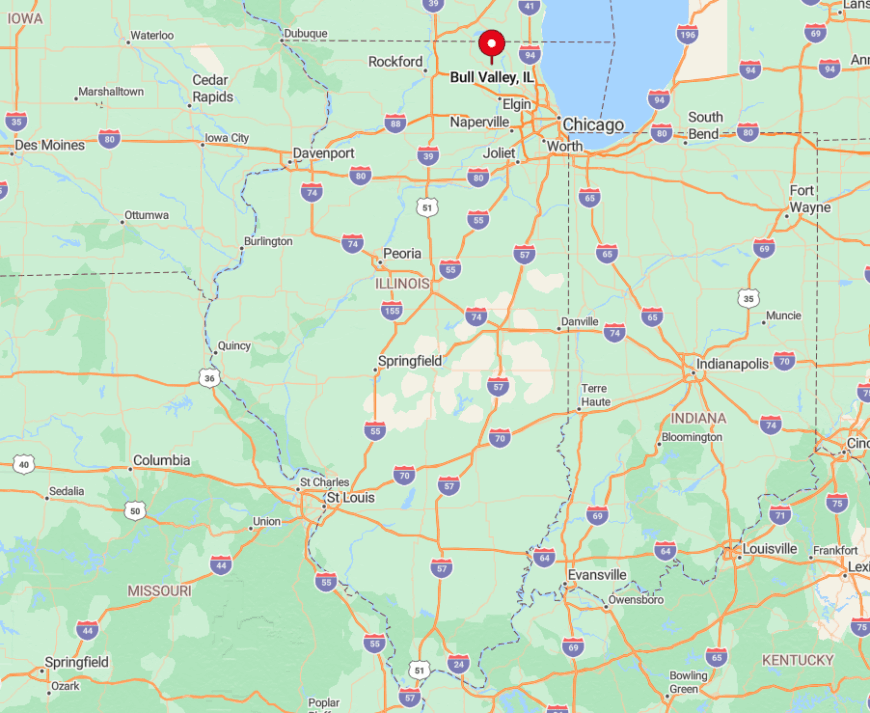
Located in McHenry County near Woodstock, Bull Valley is accessible via Illinois Route 120 and country roads. Its isolation is heightened by the lack of commercial development and the dense woodlands that surround it.
Getting there requires a drive through picturesque rural areas, making you feel like you’ve stepped back into a quieter, simpler time. Bull Valley’s commitment to maintaining its natural environment makes it the epitome of seclusion in Northeast Illinois.


